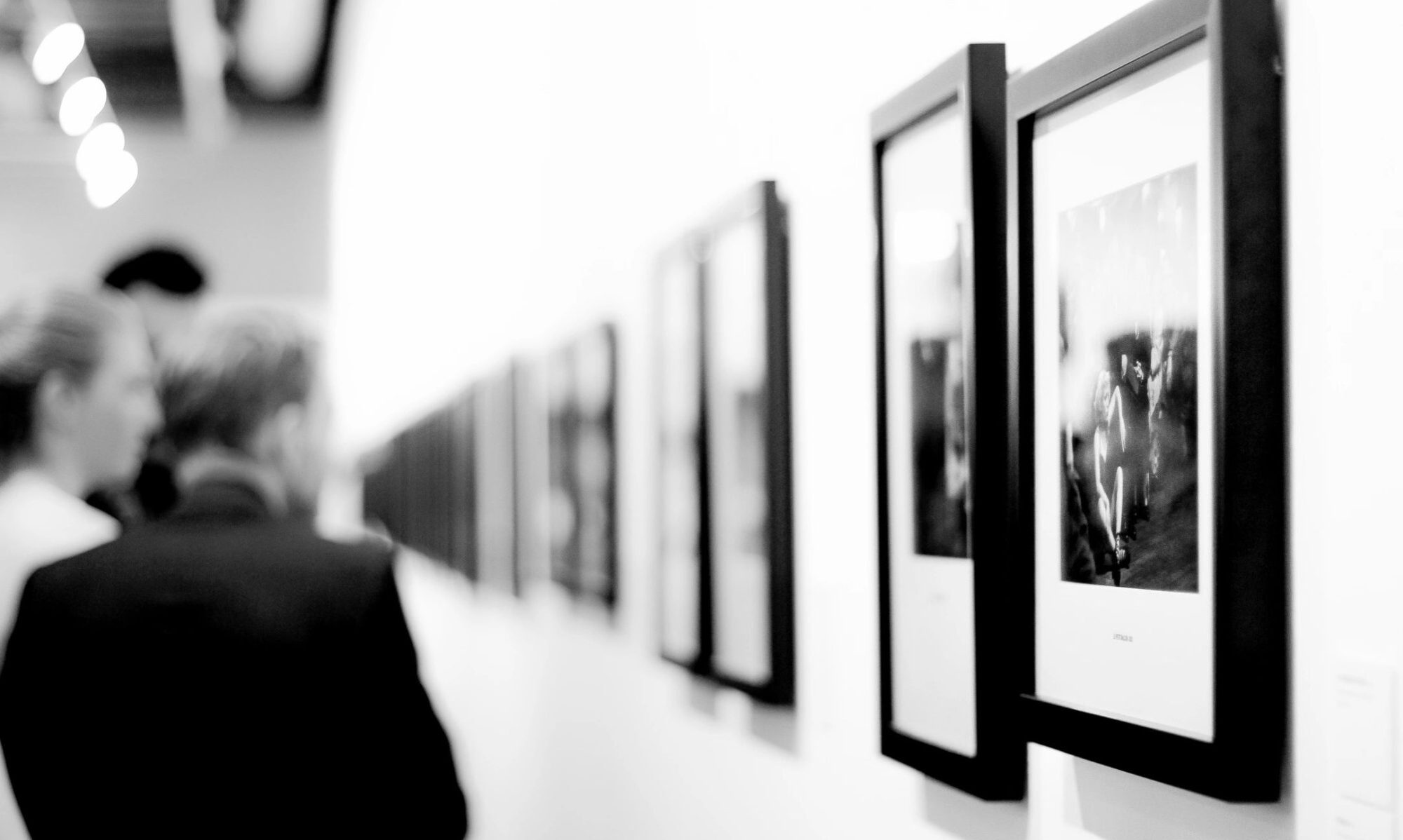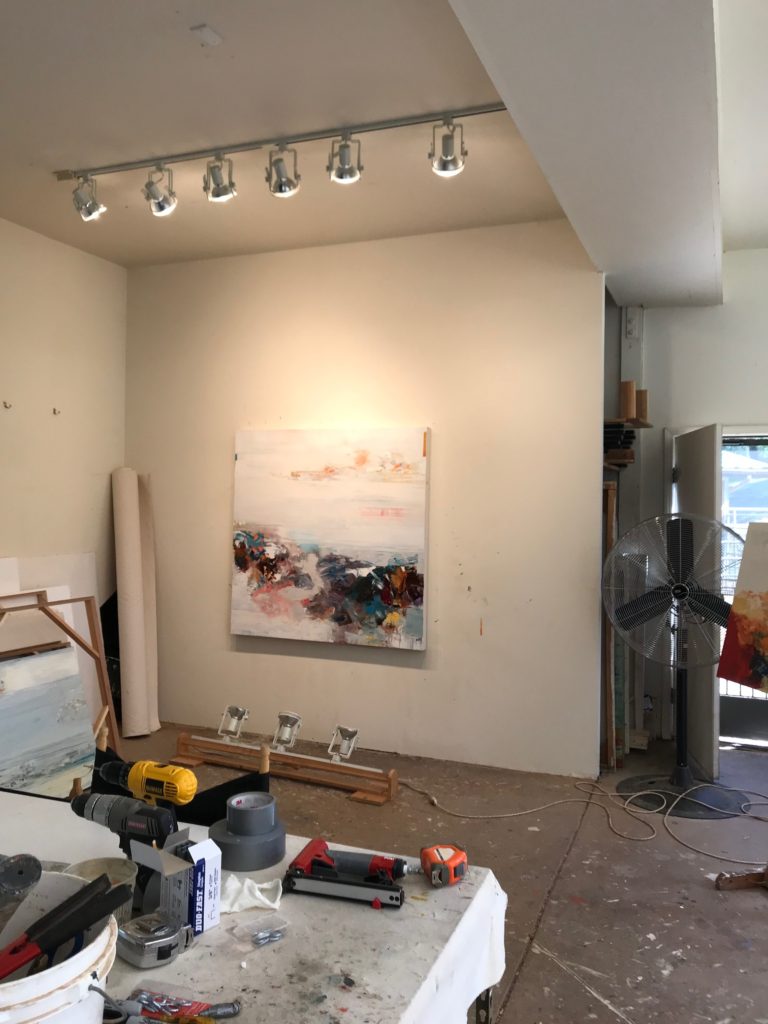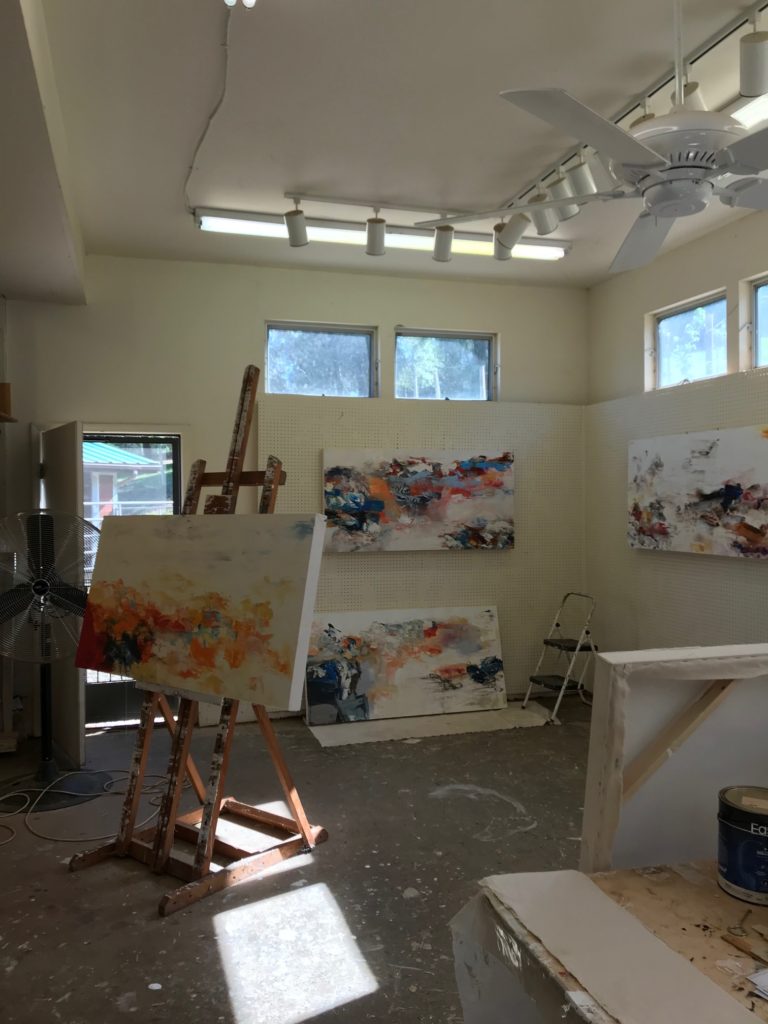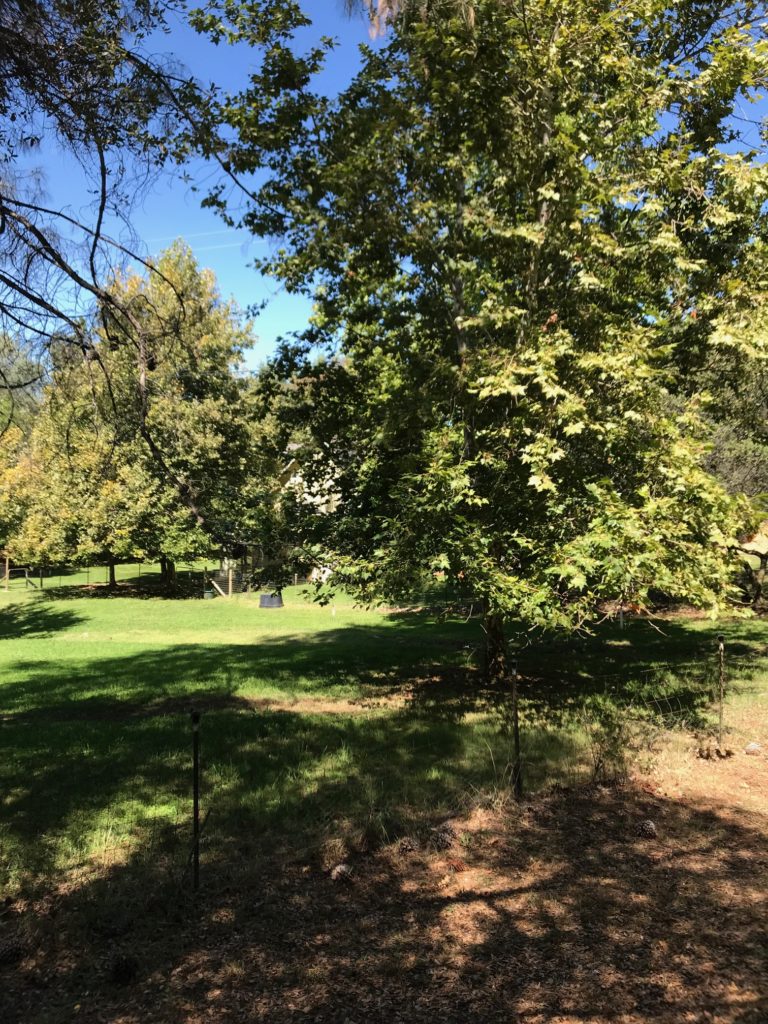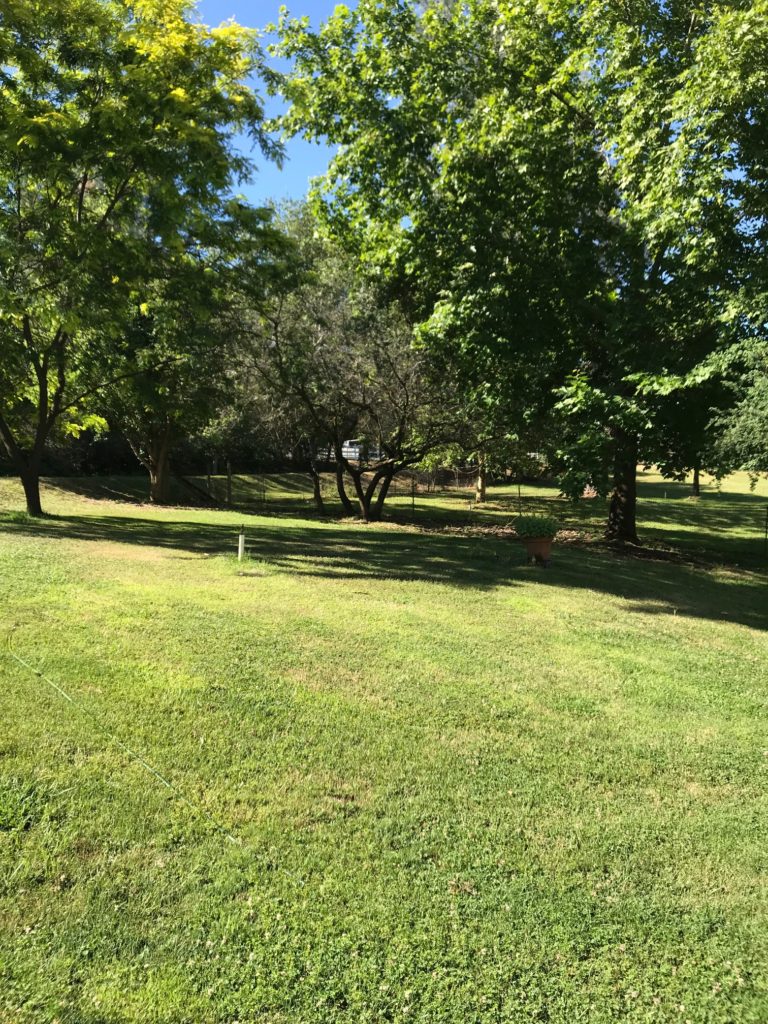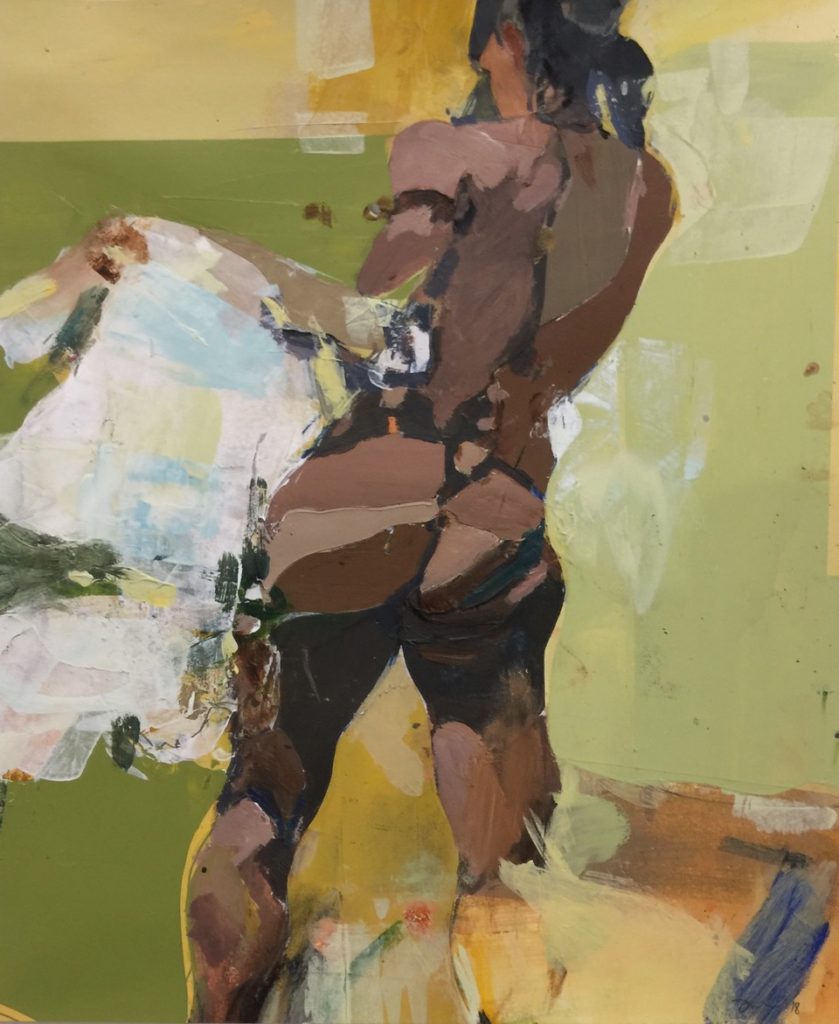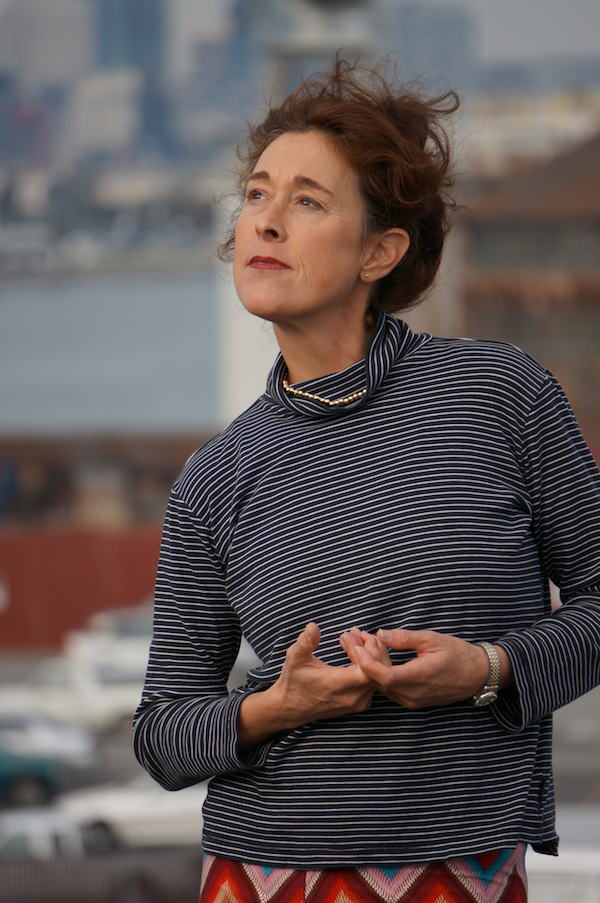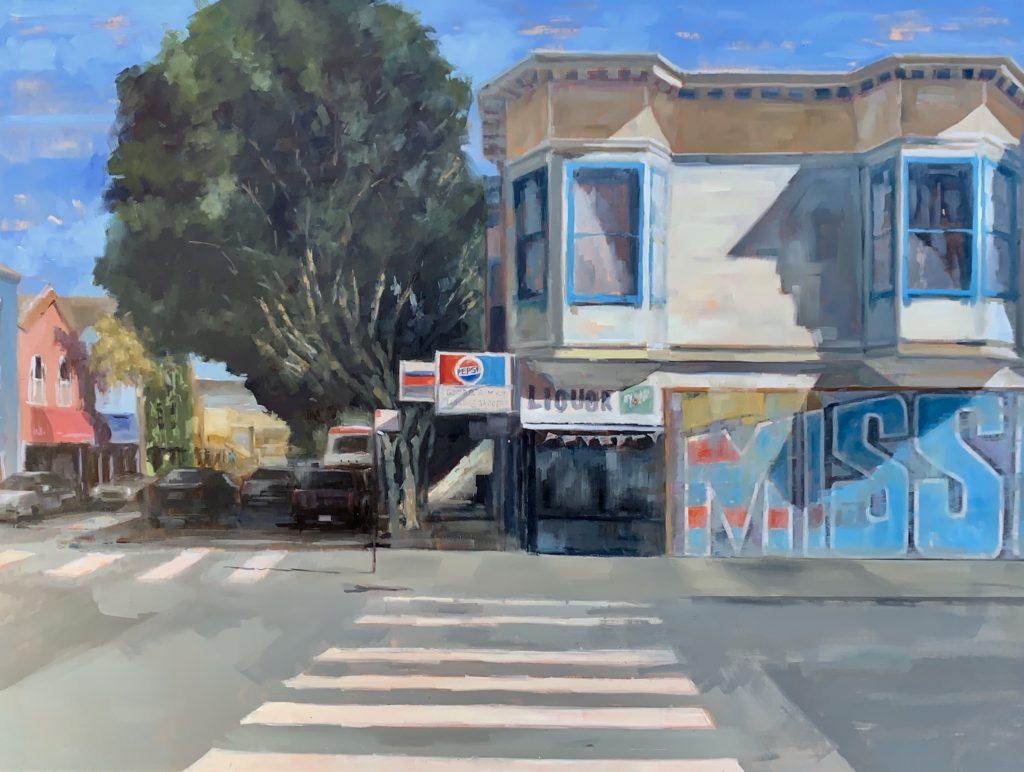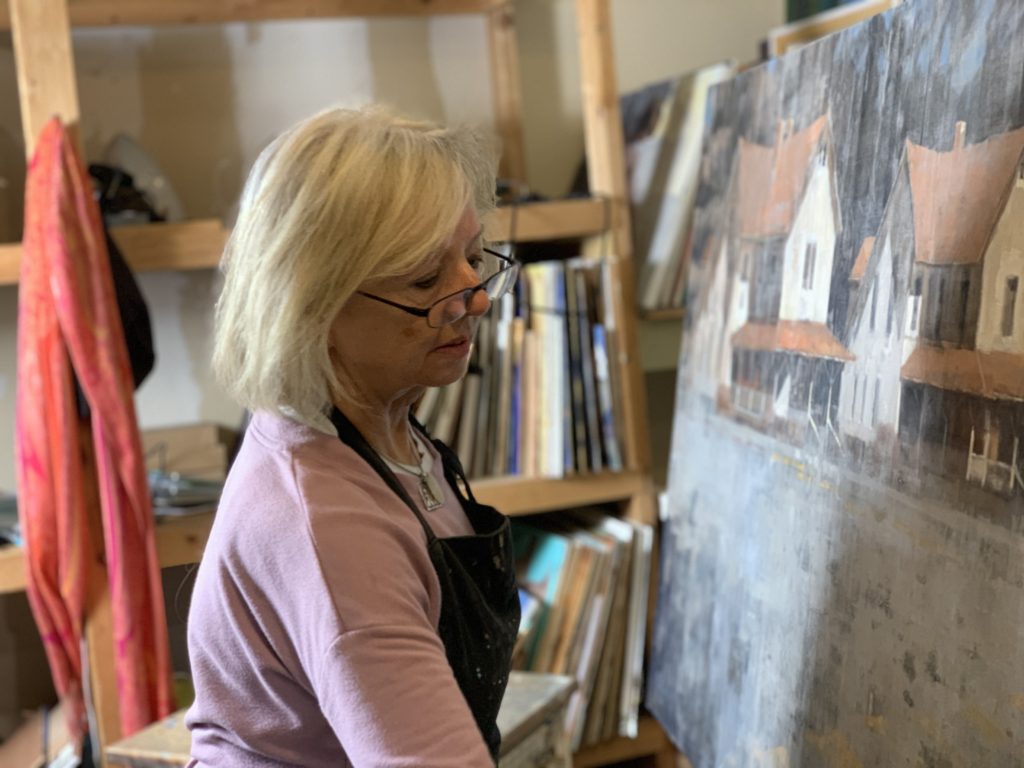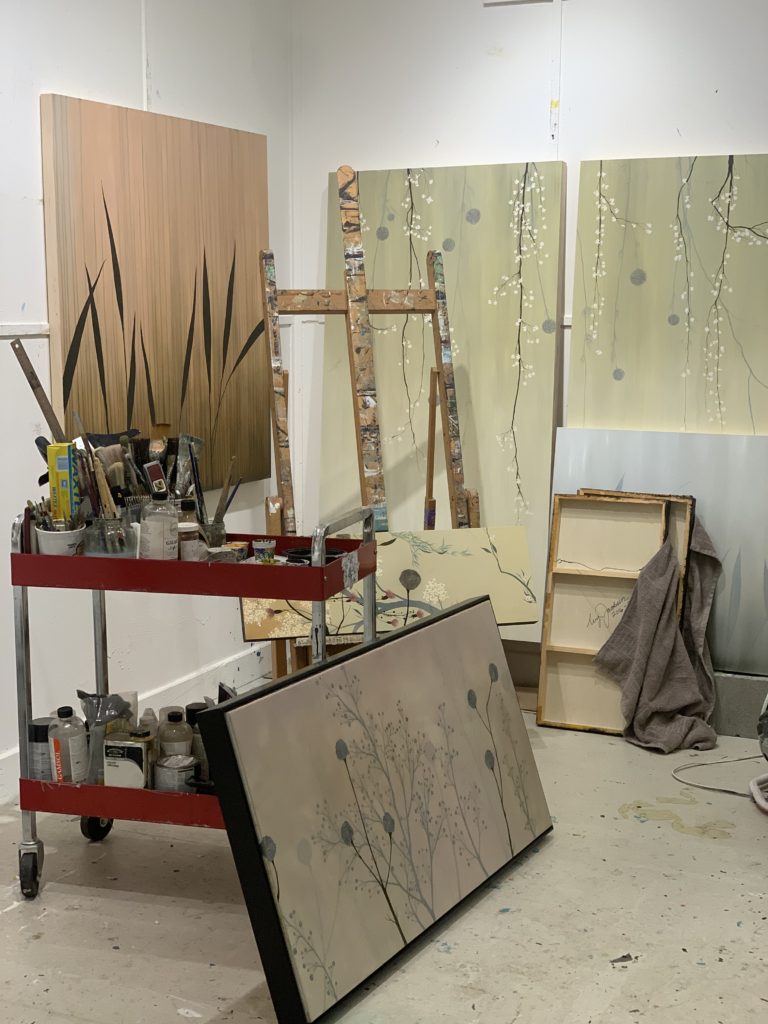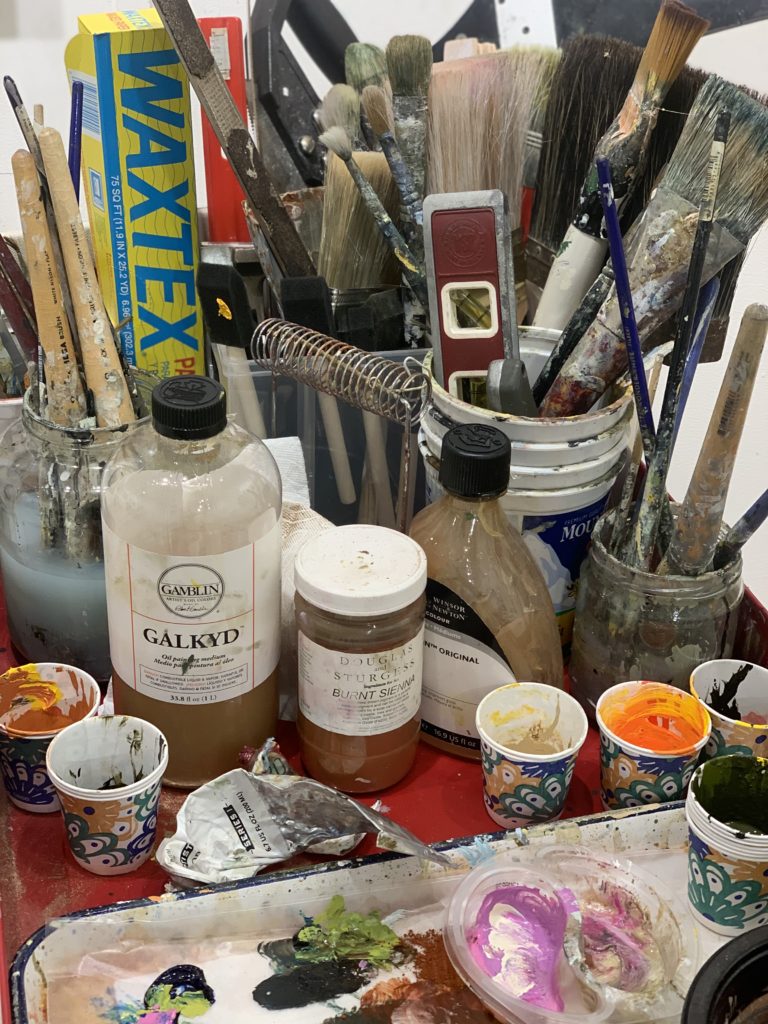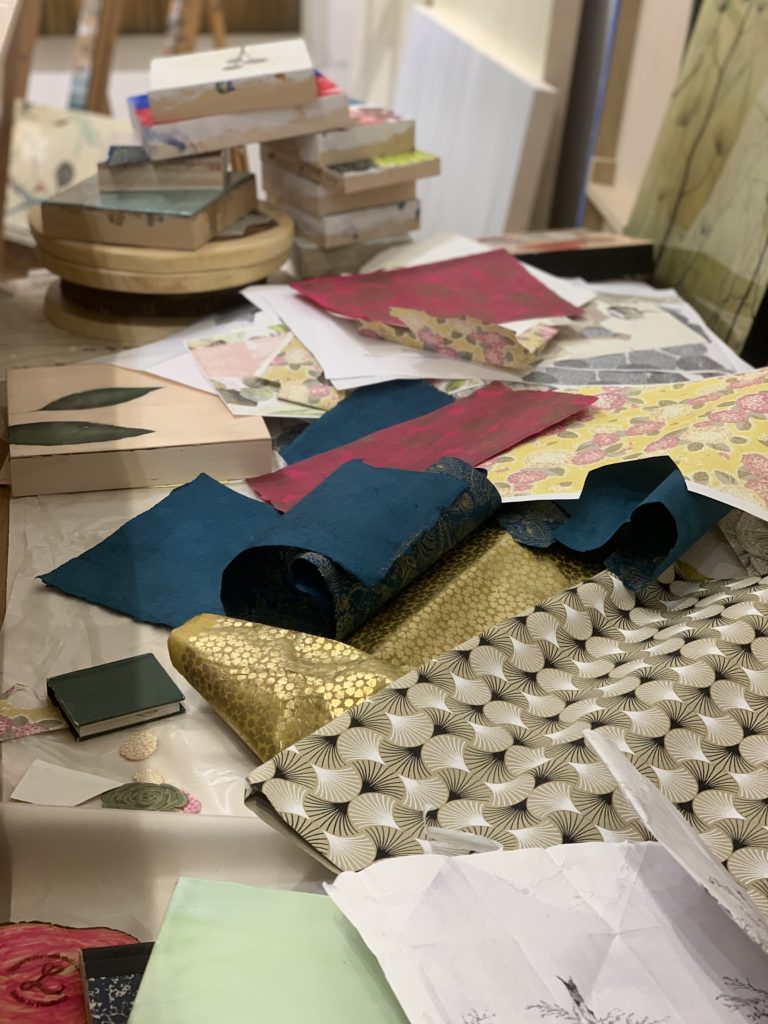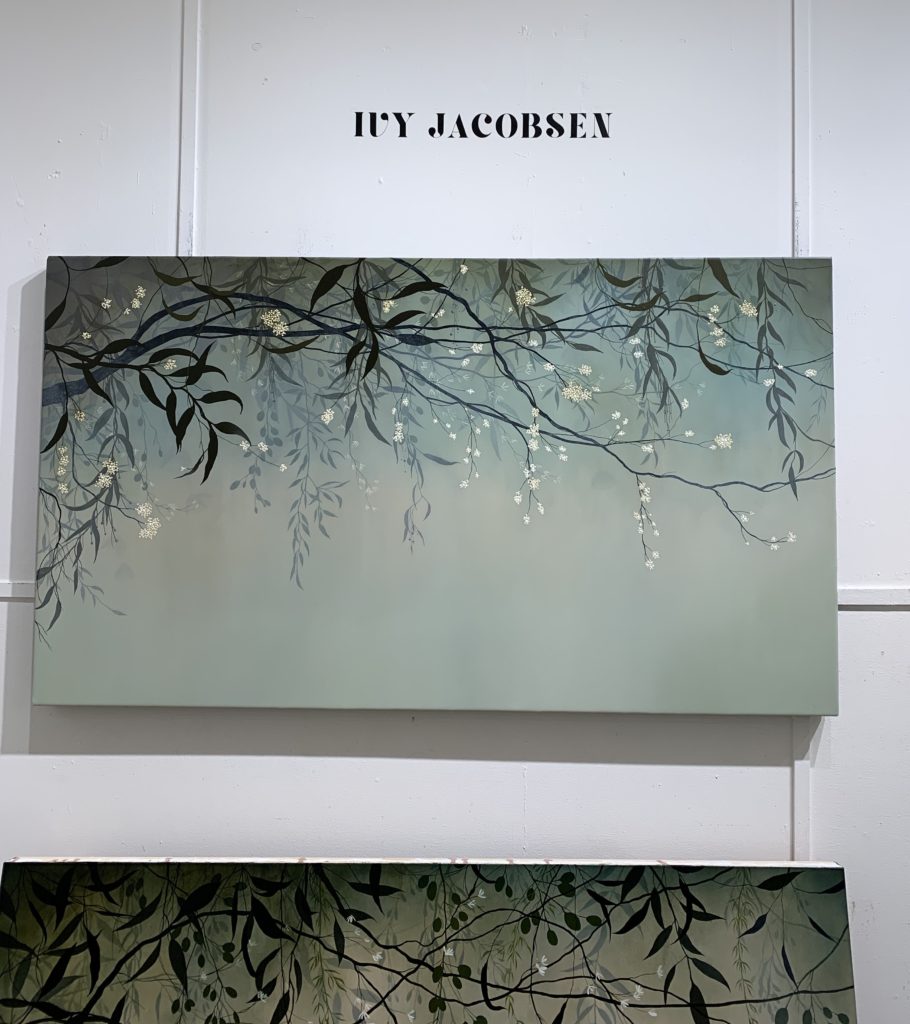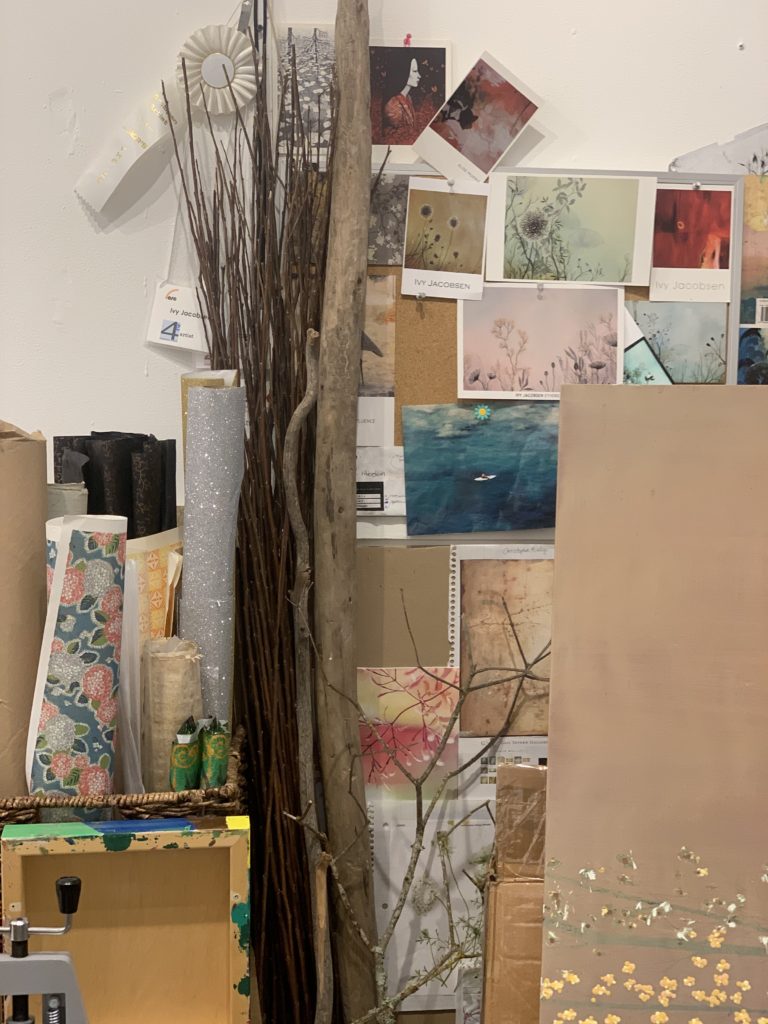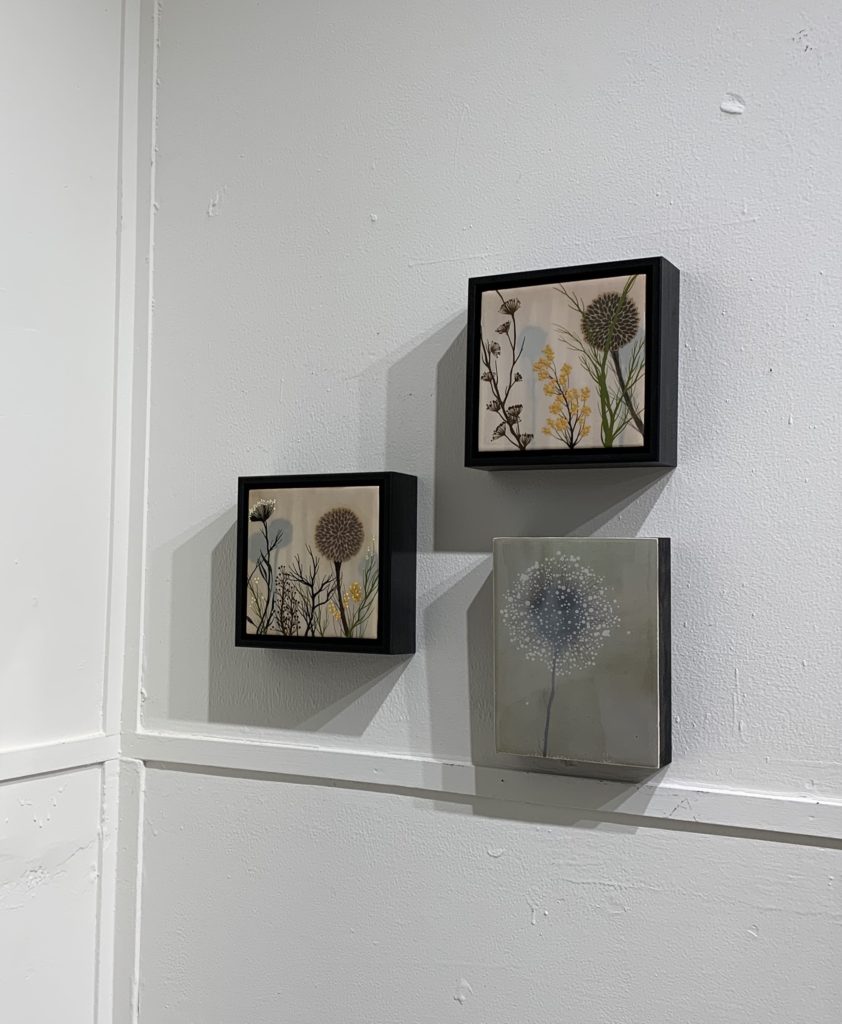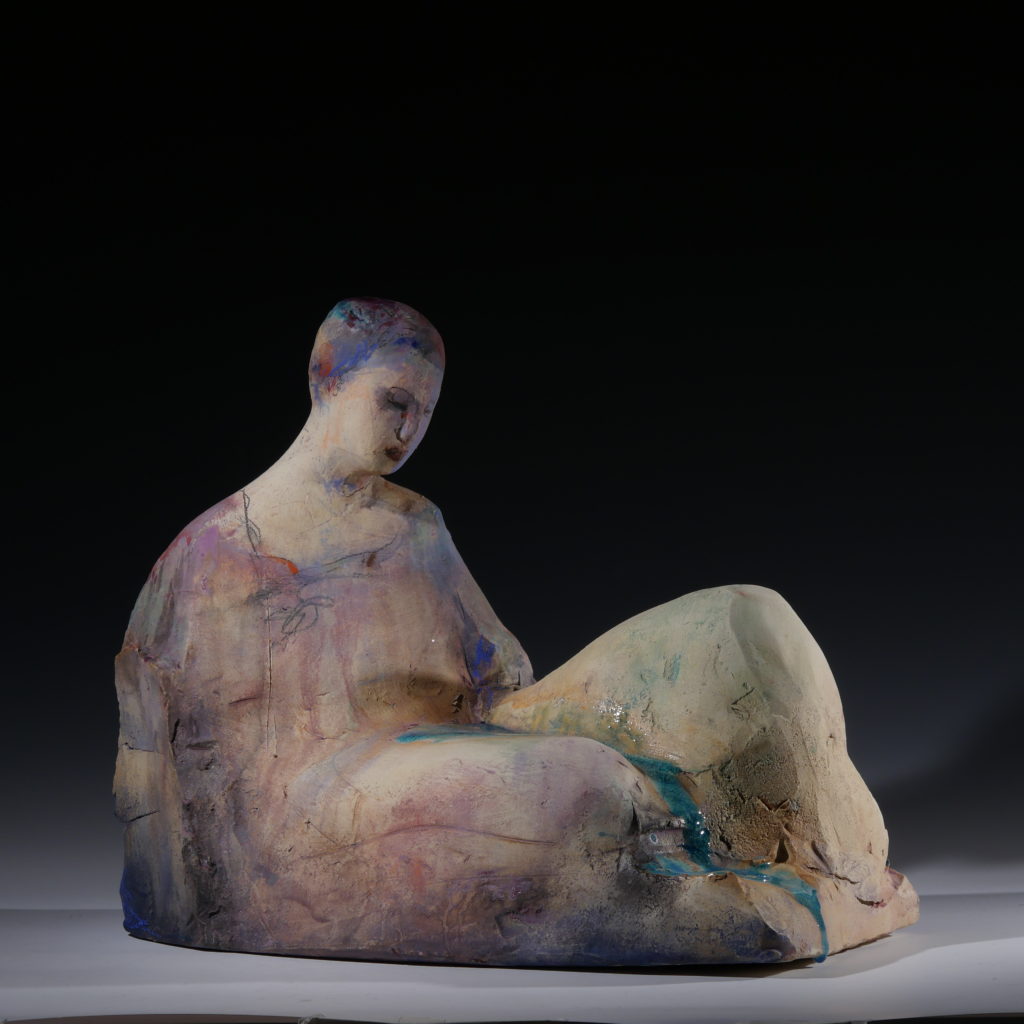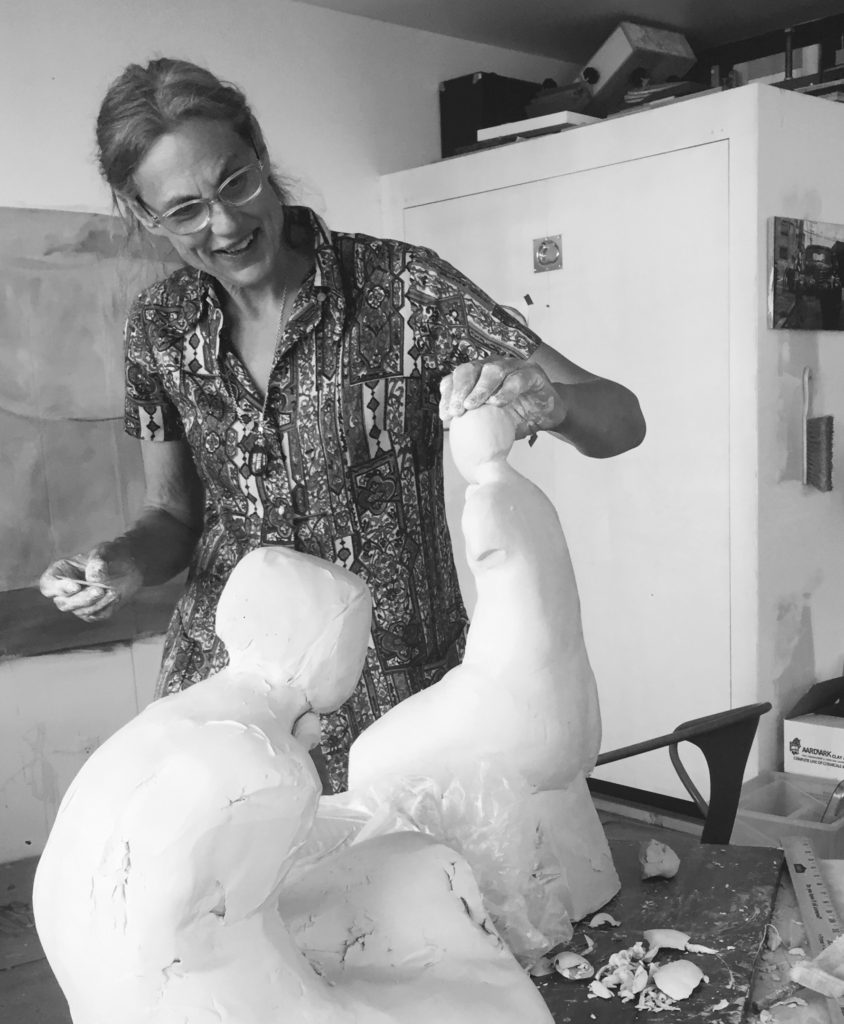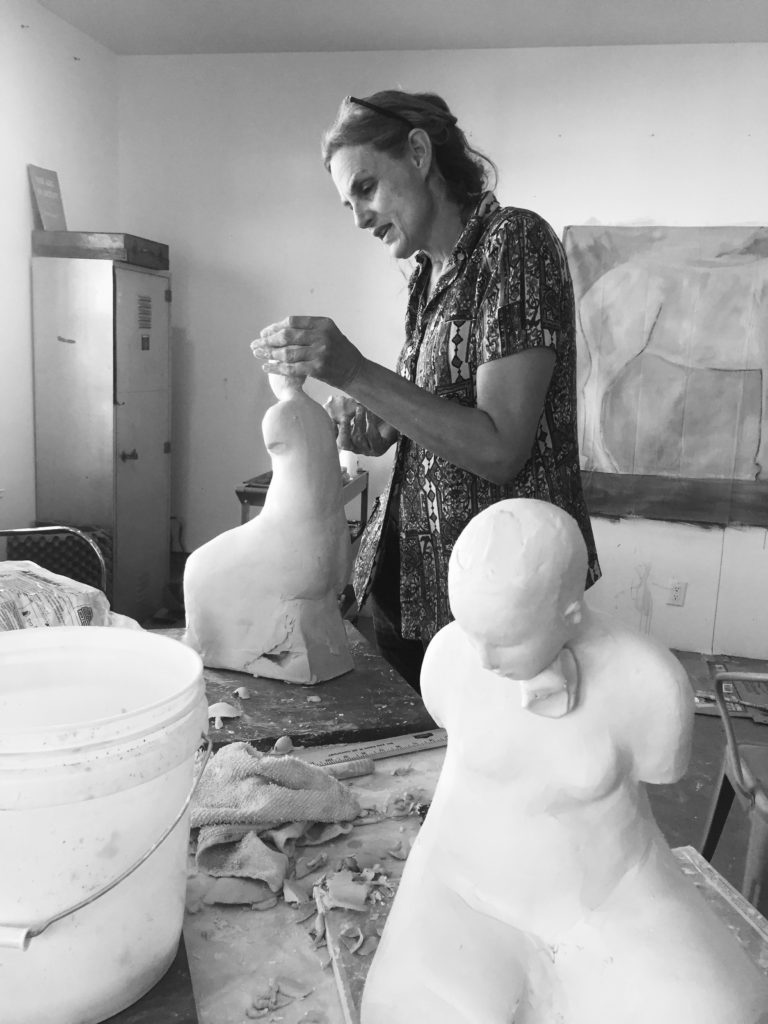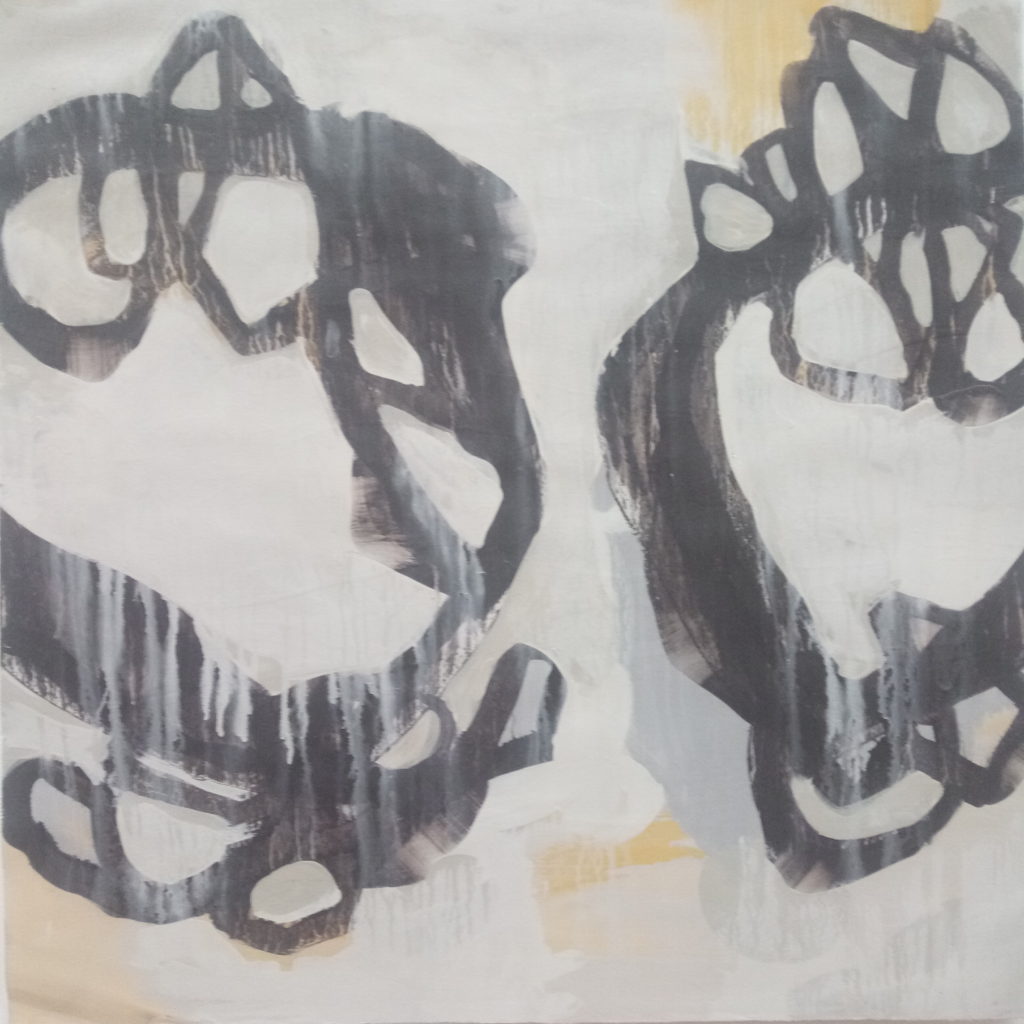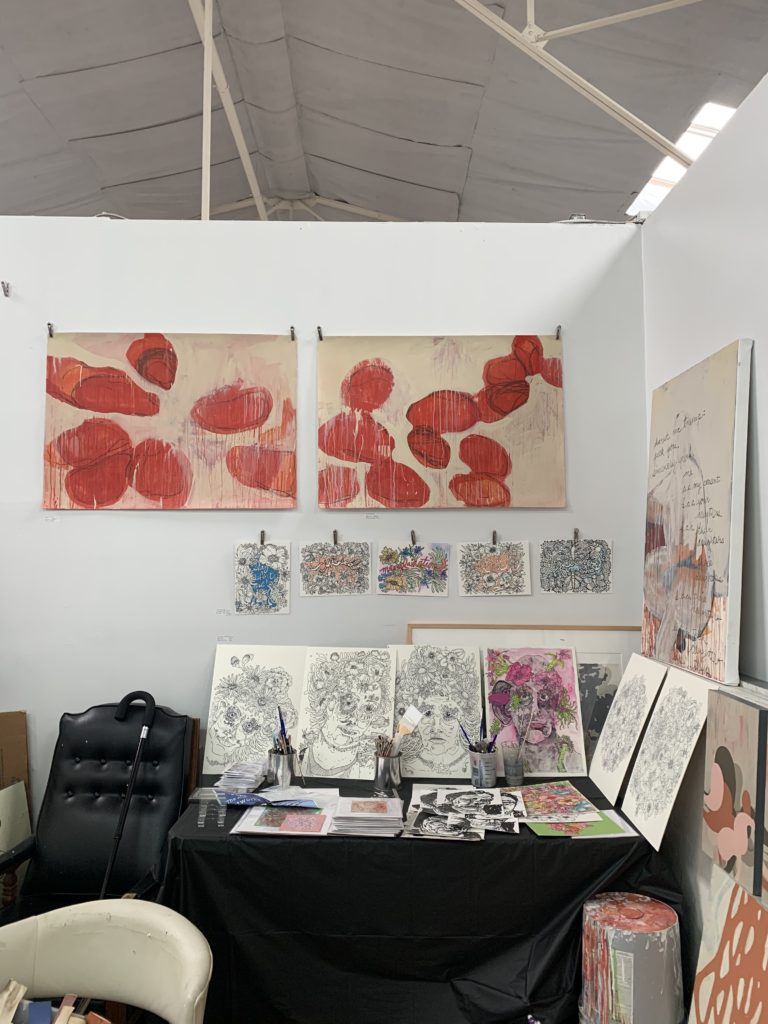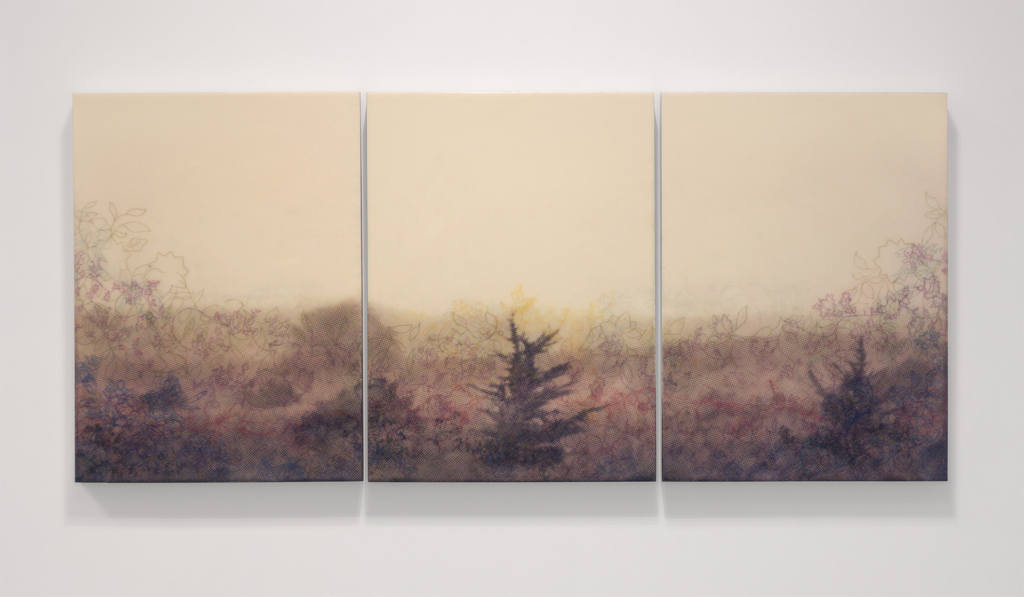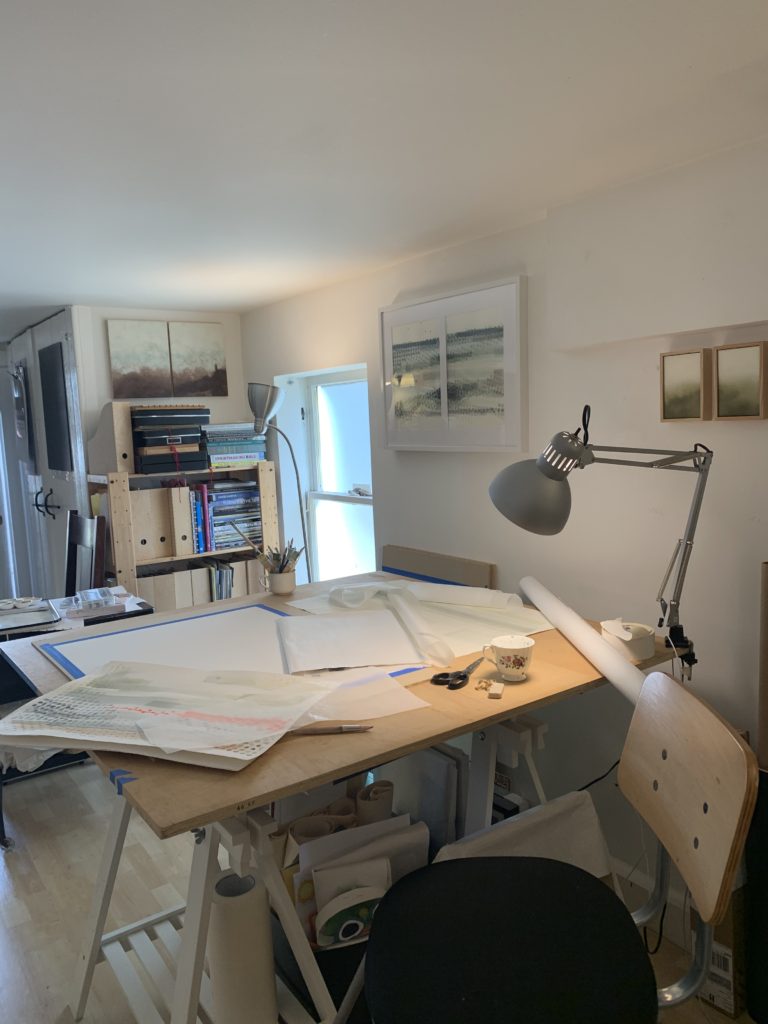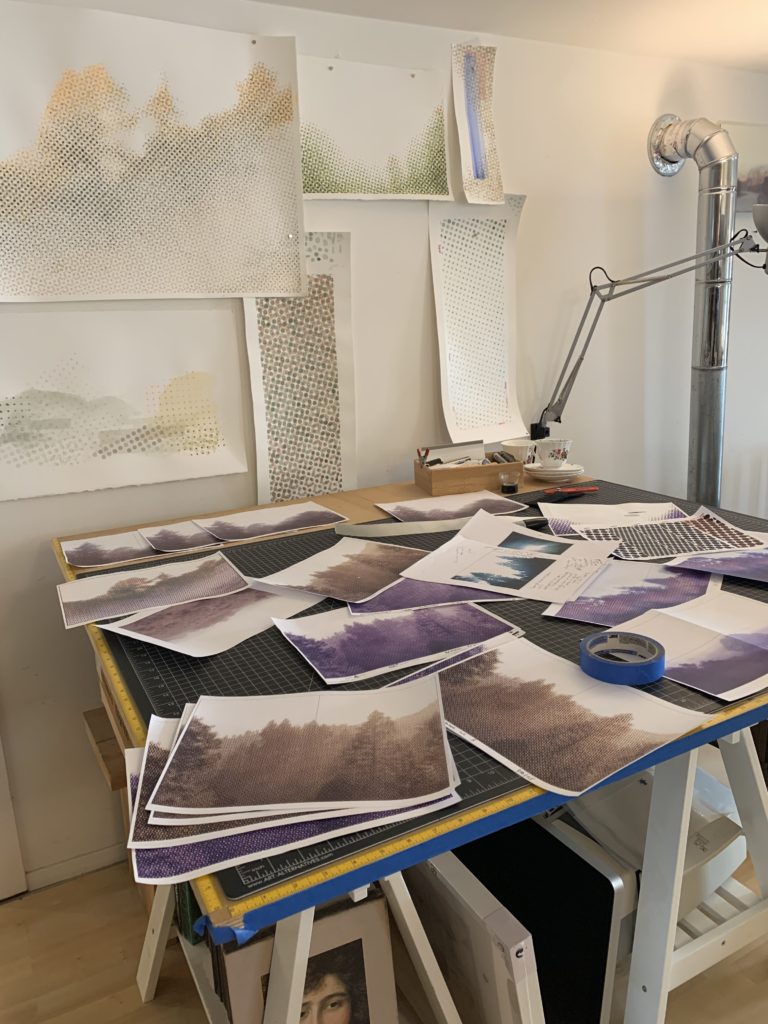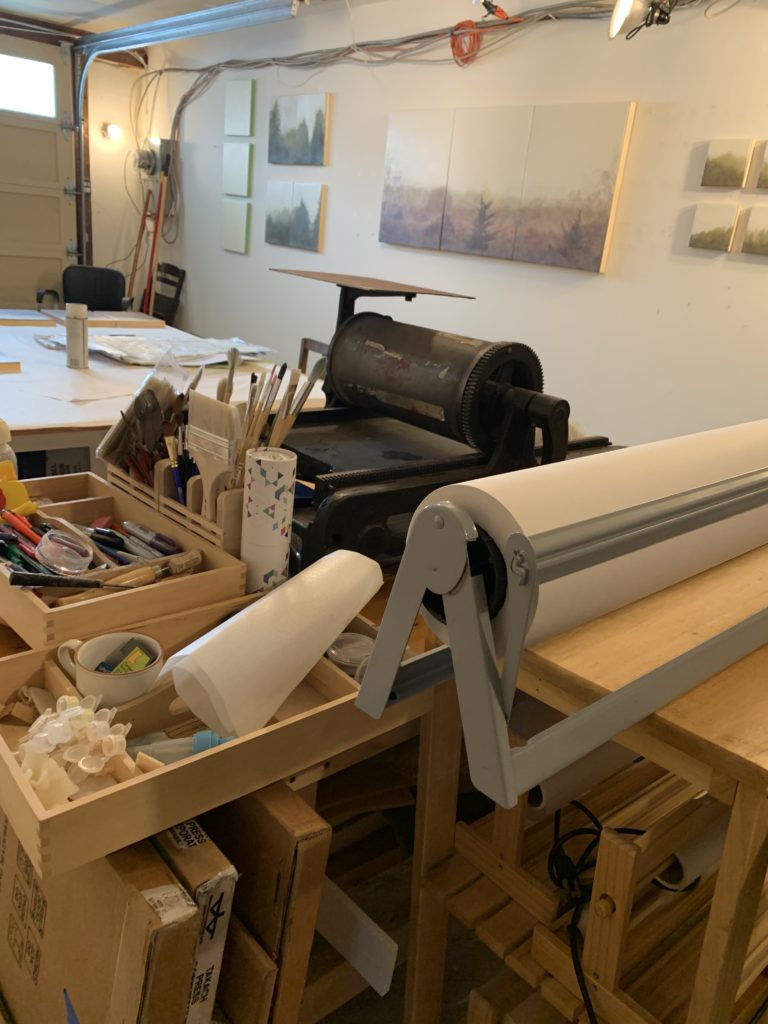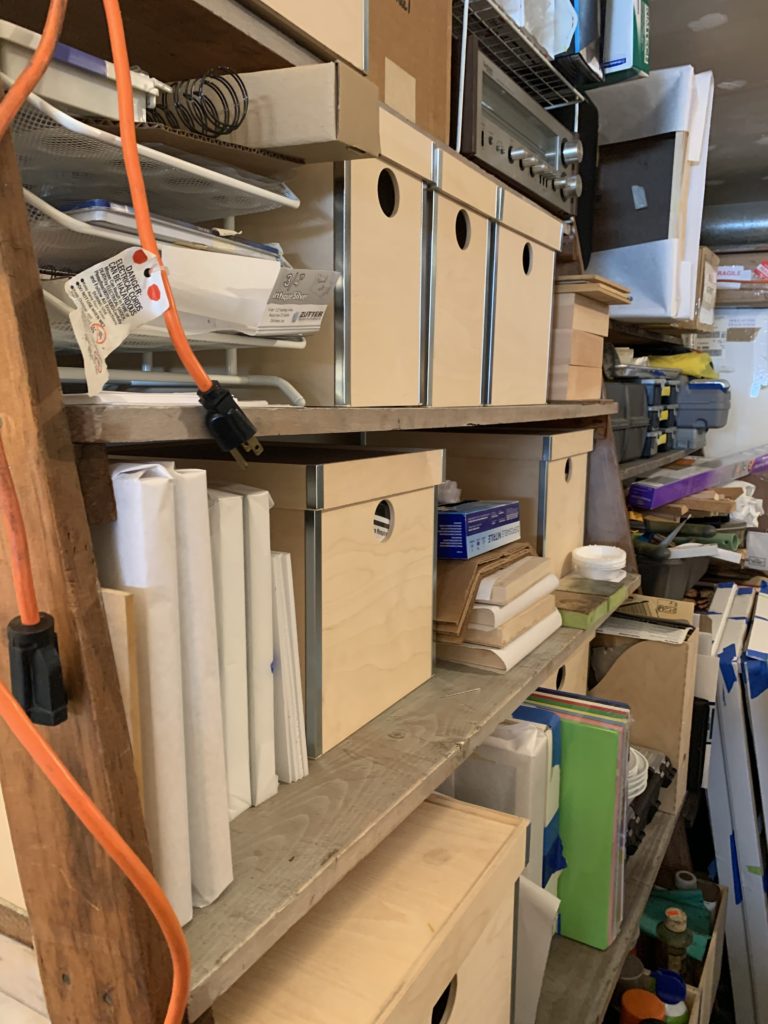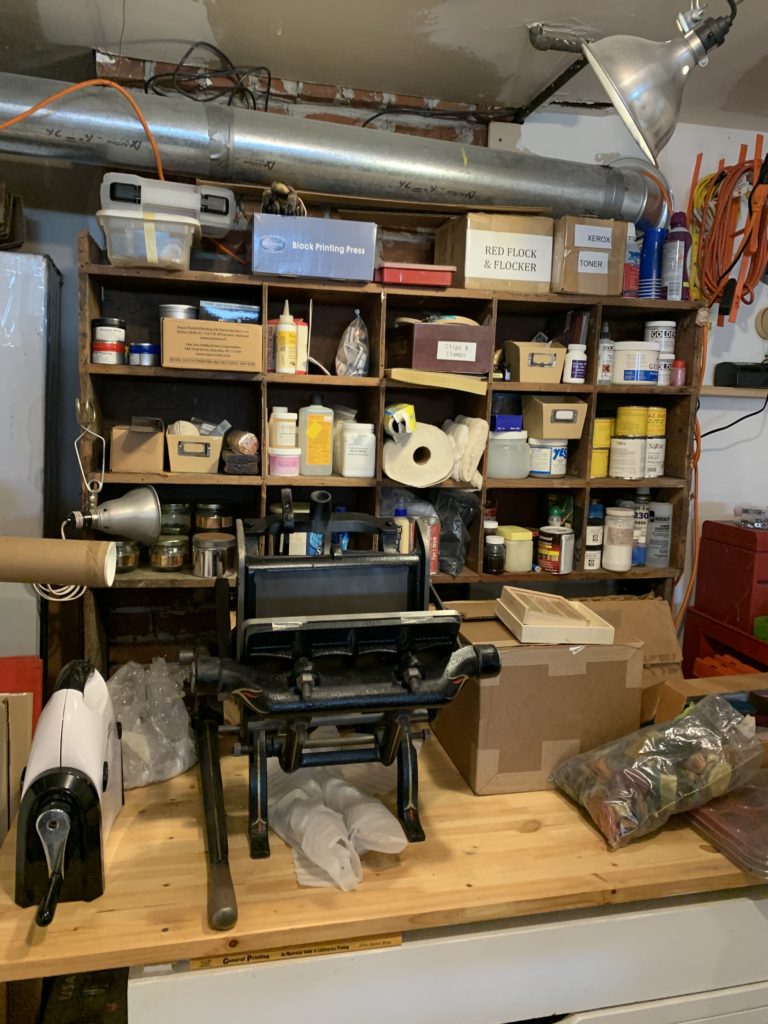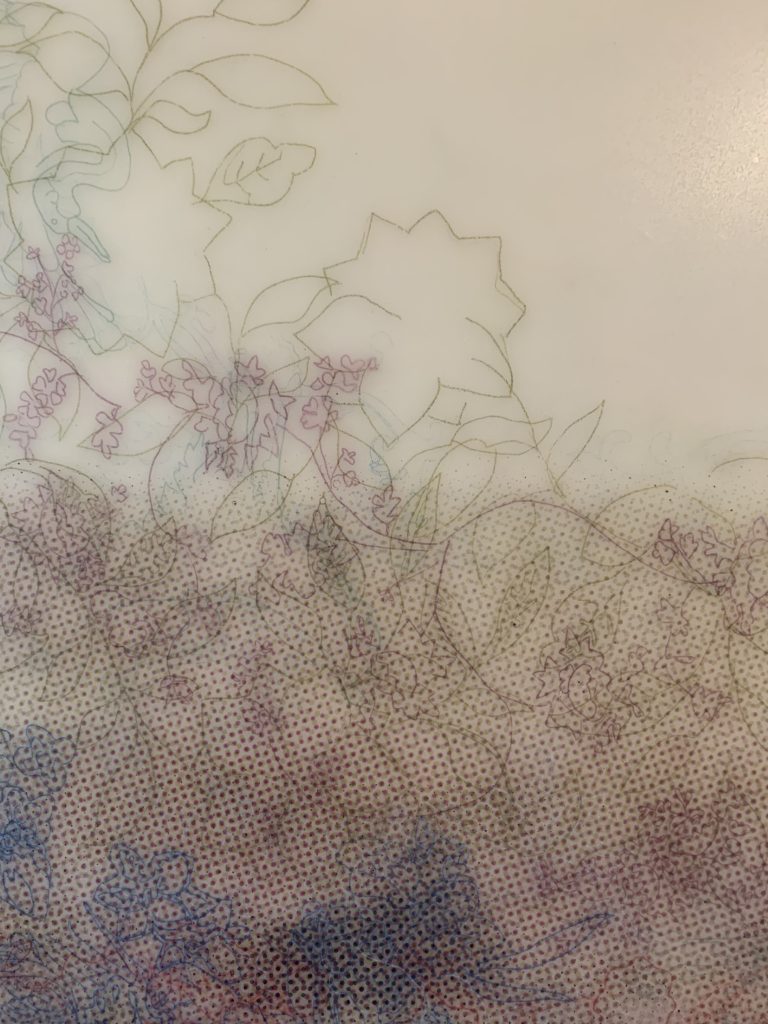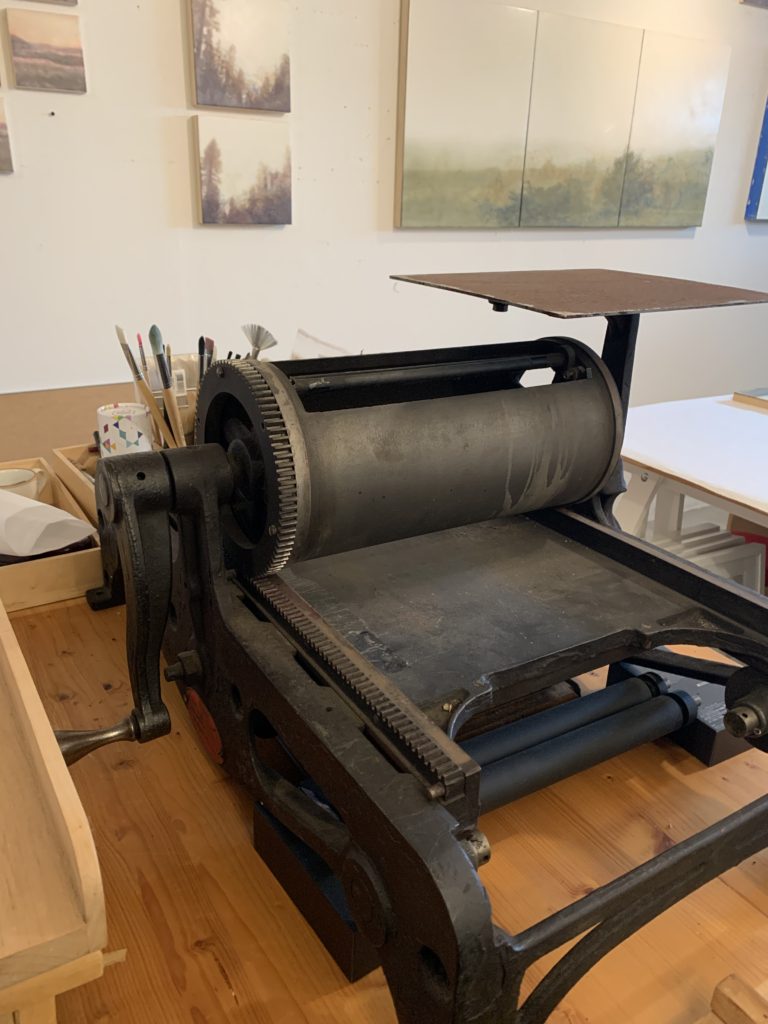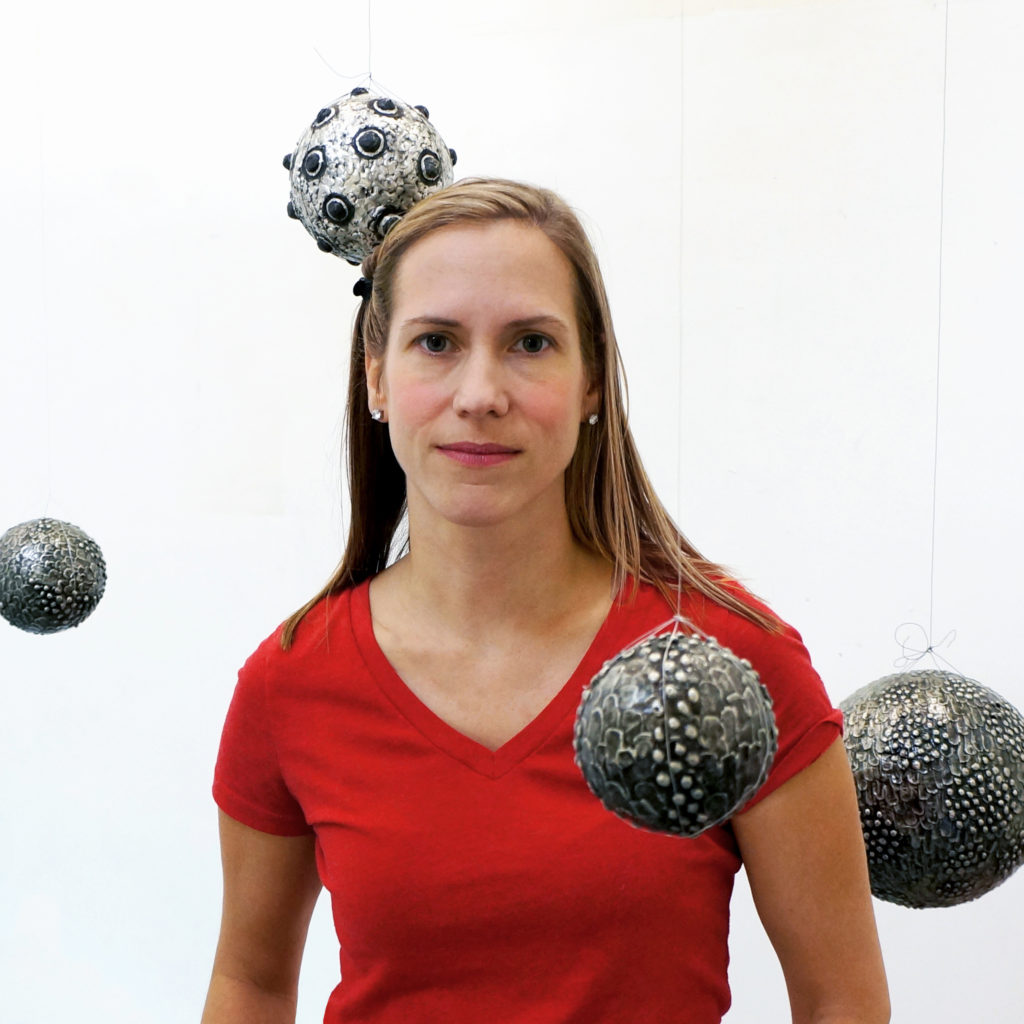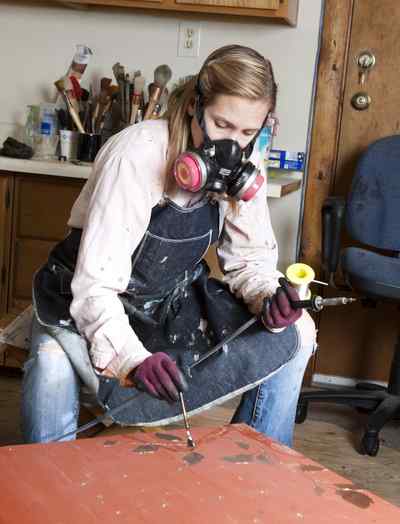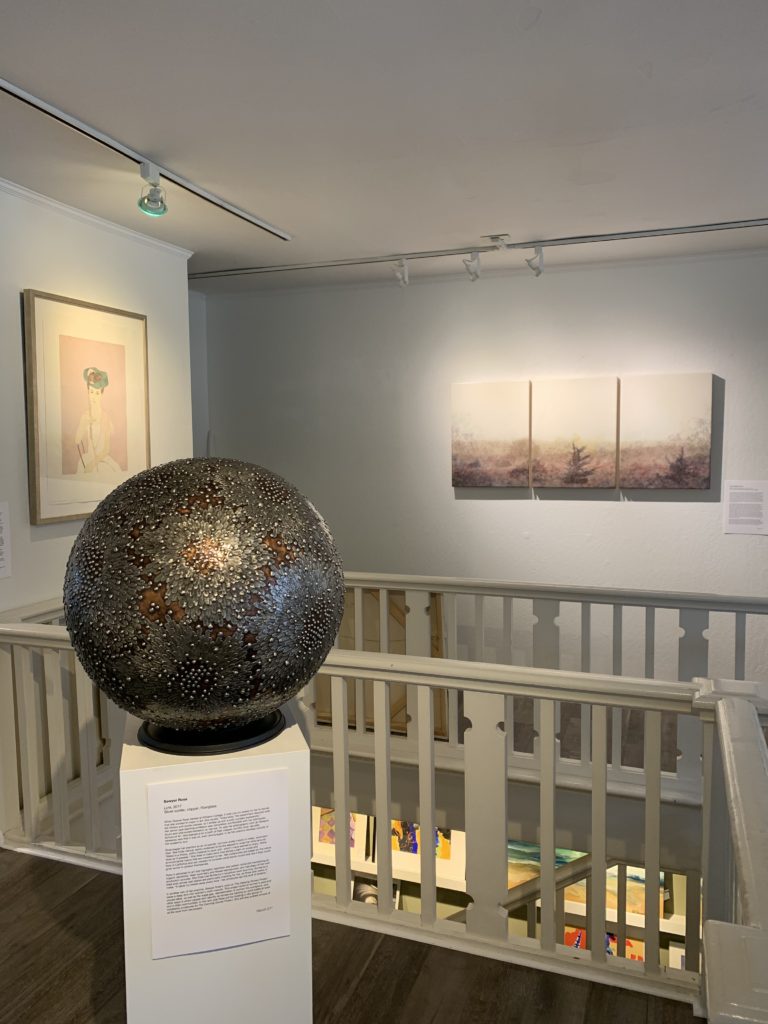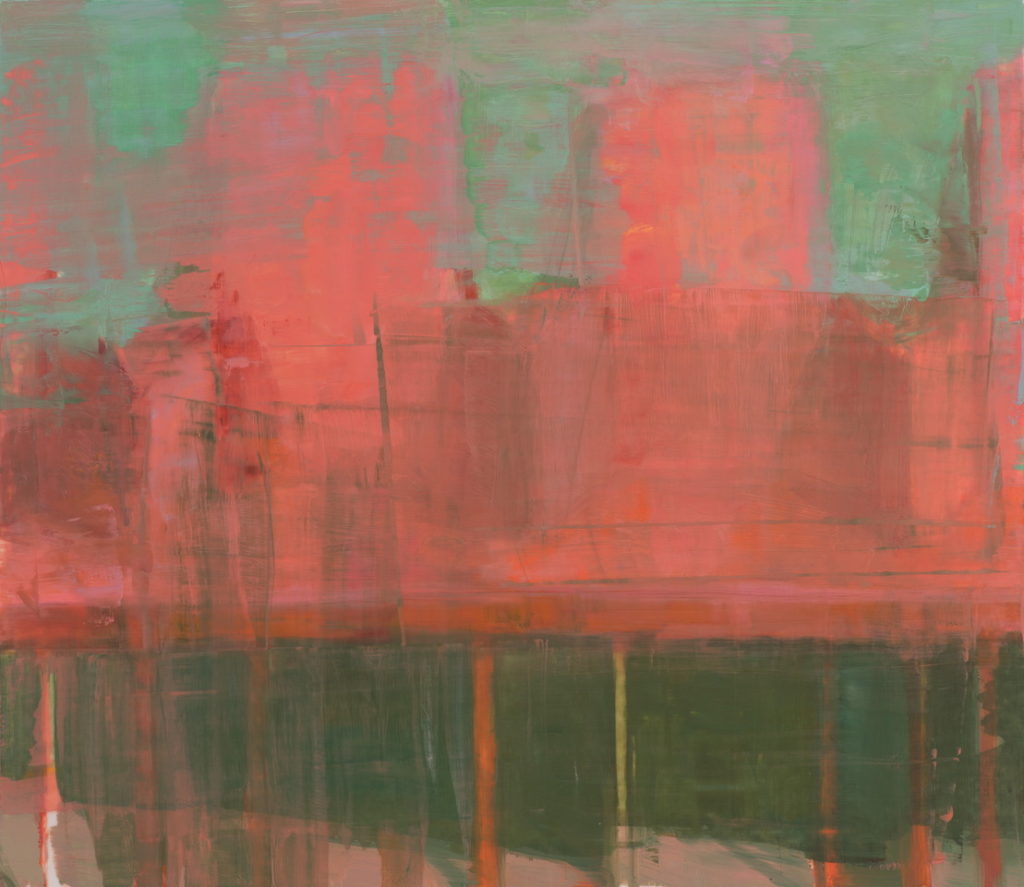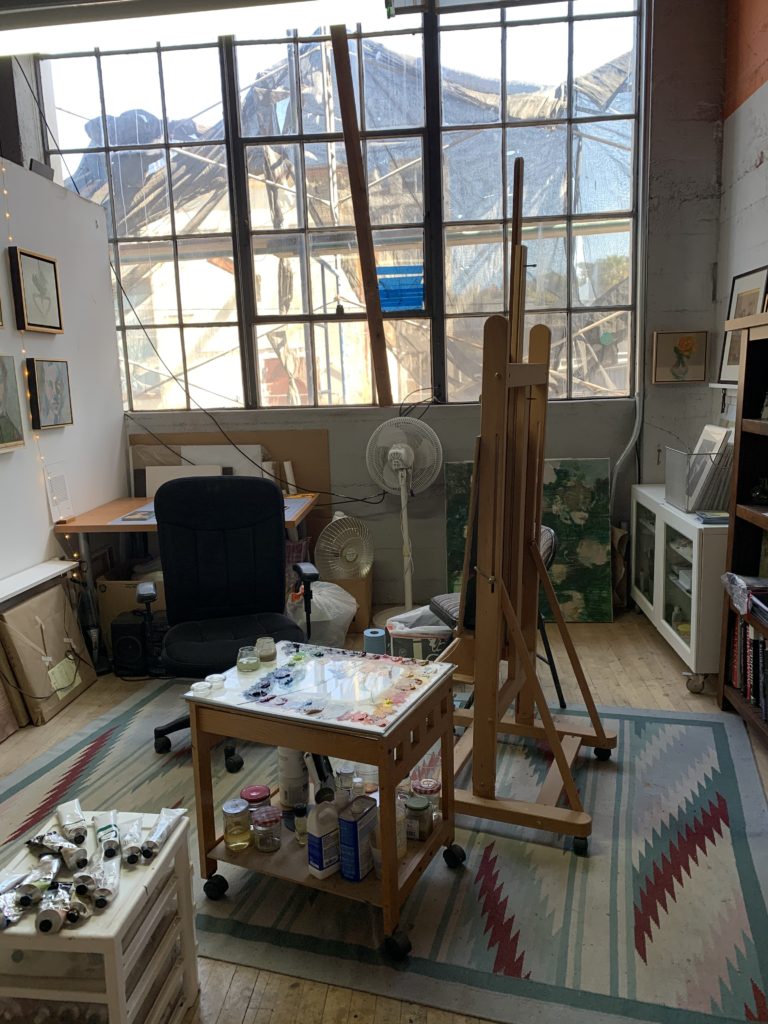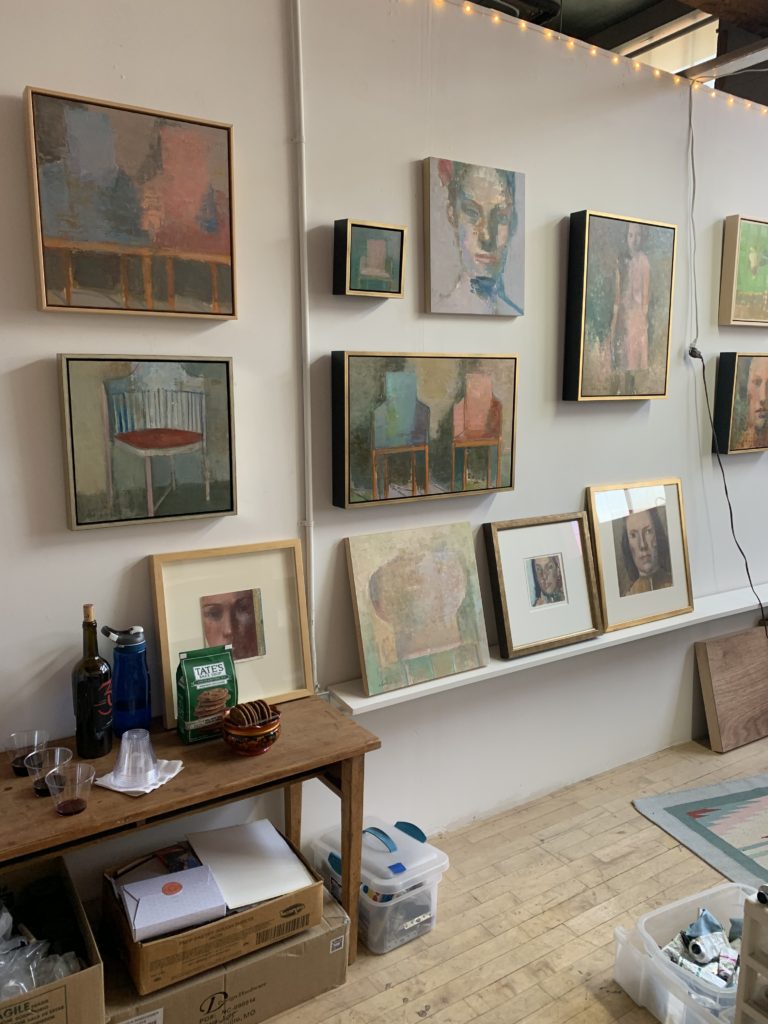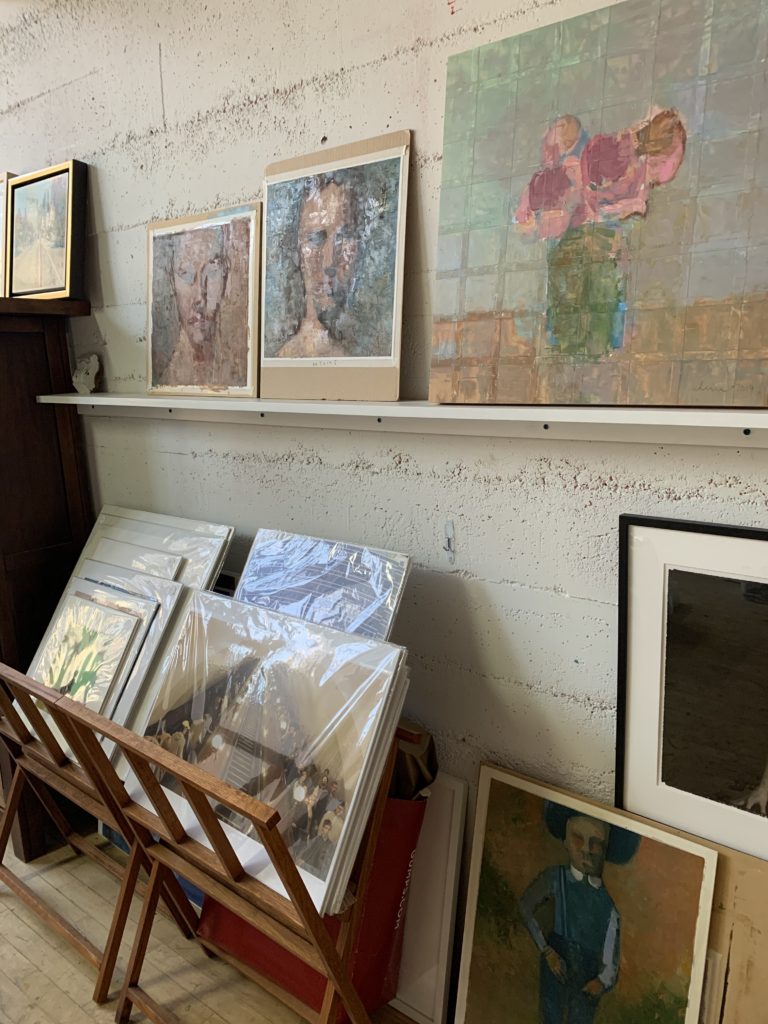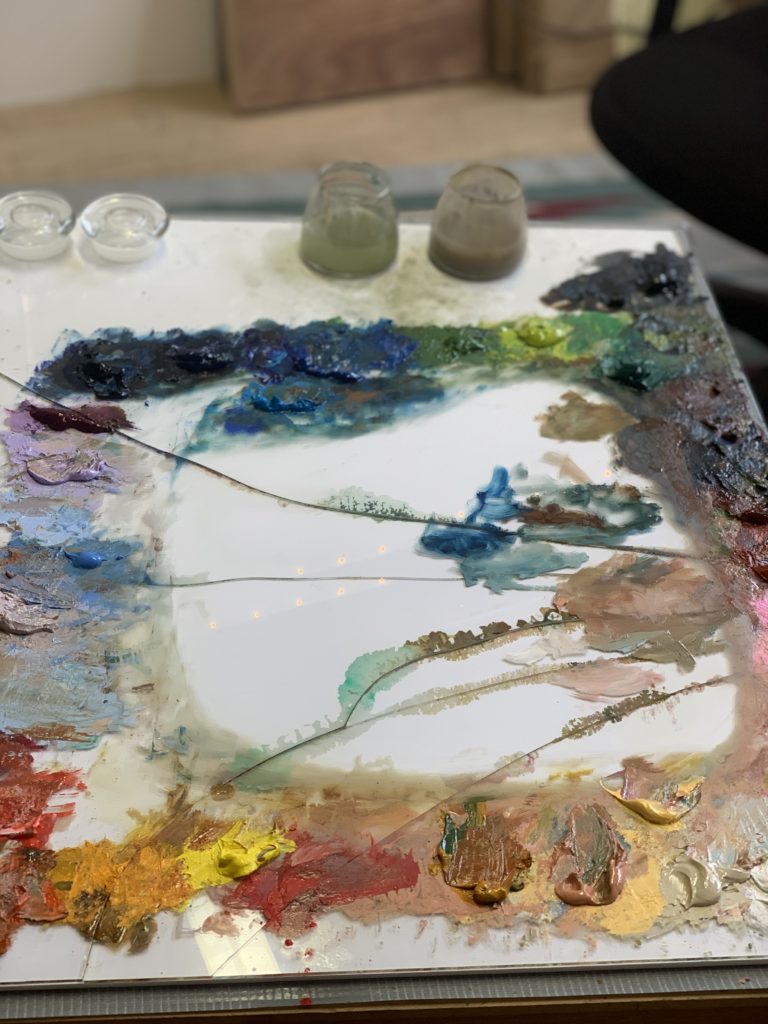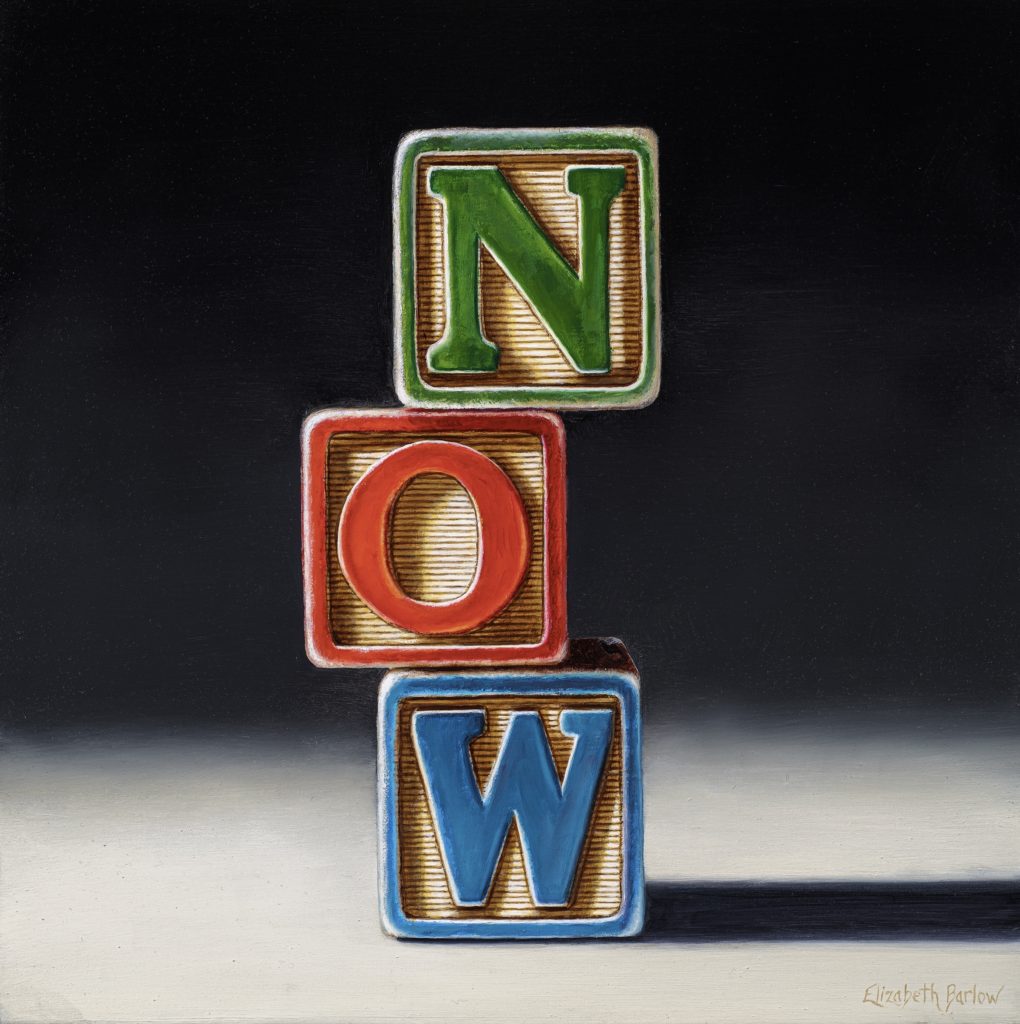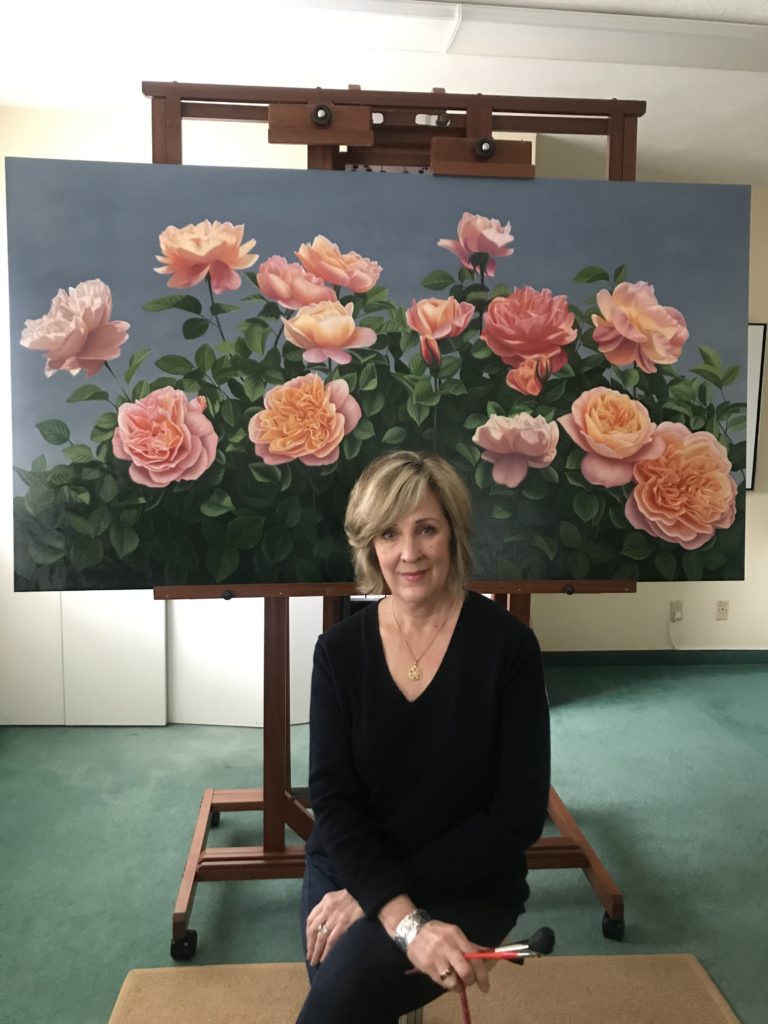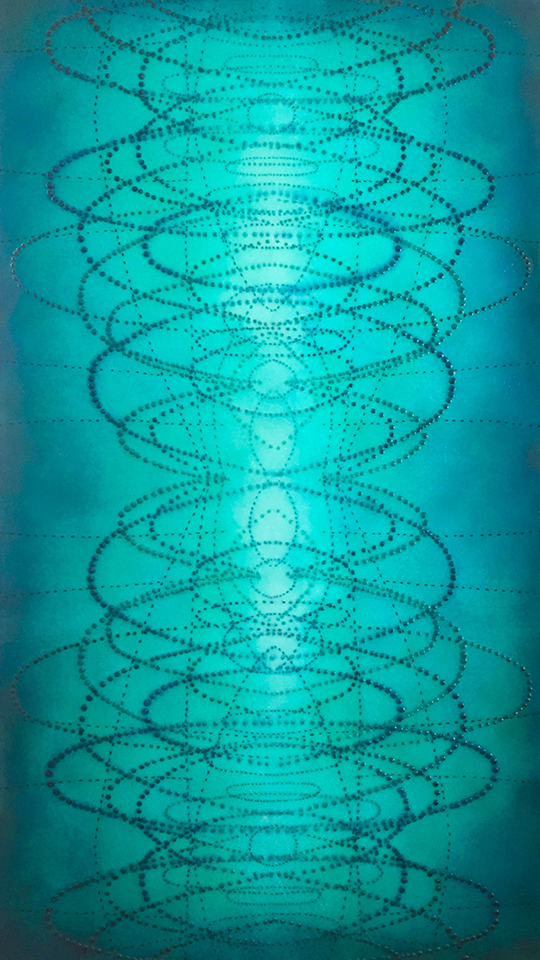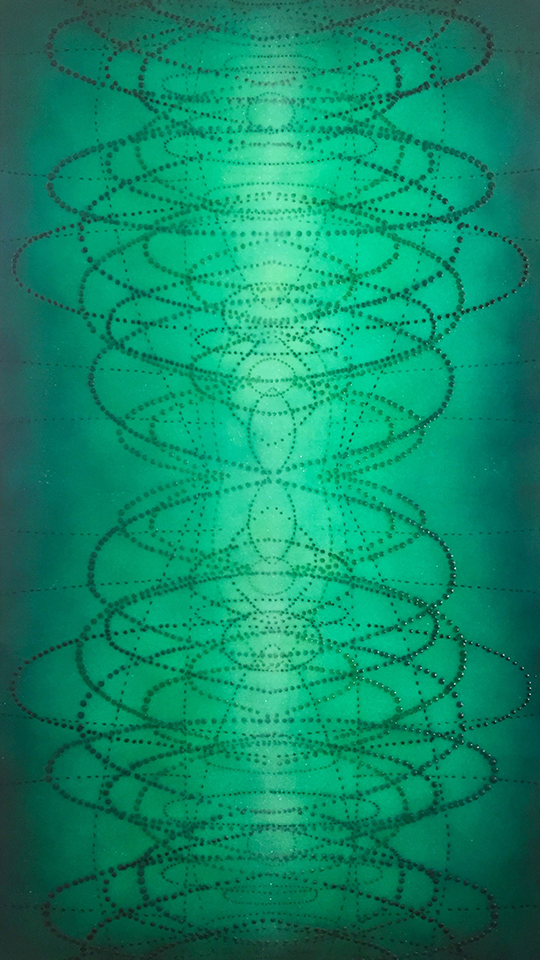31 Women – March 31st: Kelsey Irvin
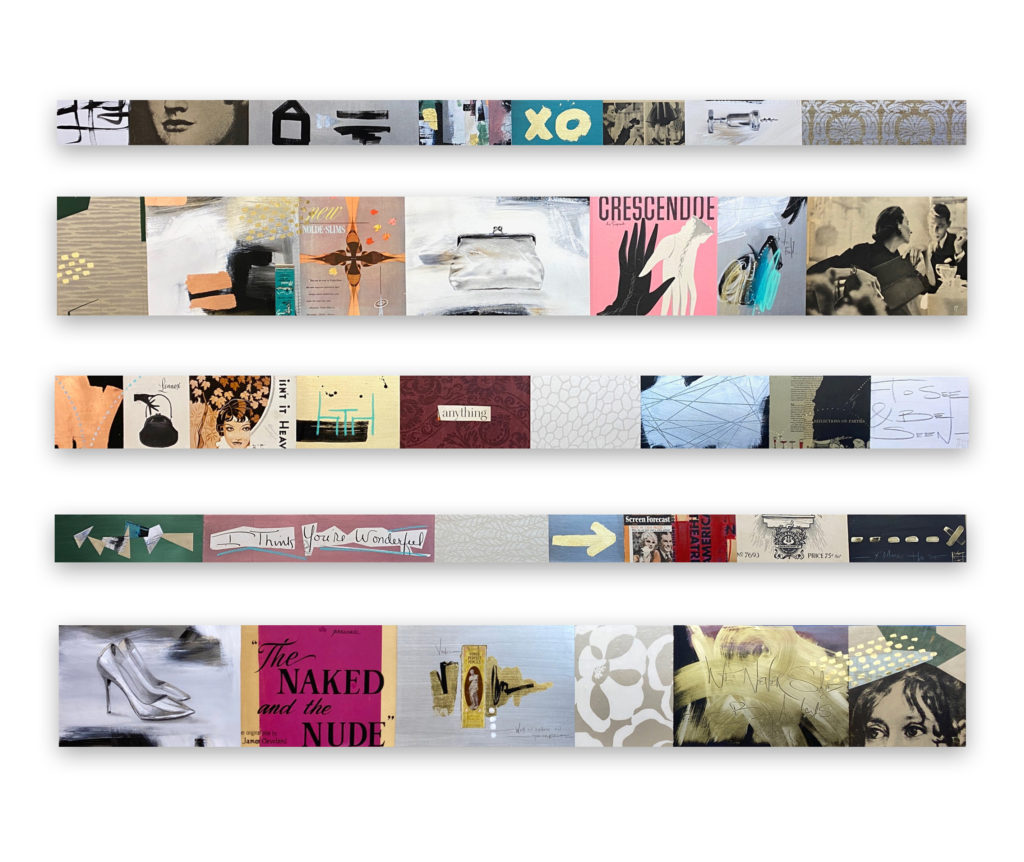
Storyline Silk I-V”, 2020
Vintage ephemera, gold leaf, oil, acrylic and resin on panel
Appearing like paintings at first view, Kelsey Irvin’s contemporary collages are a treasure trove of materials upon further investigation. In her process she uses everything and anything: vintage ephemera, fabric from the 1800s, McCall’s dress patterns, Hollywood movie magazines from the 50s, New York Times fashion ads from the 20s, matchbox covers, oil, acrylic, graphite, and sometimes resin. The ensuing works conjure memory and nostalgia. There is crossover between past, present, and future, with unifying themes of independence, adventure, the strength of women, and the innocent imagination of childhood.
Irvin is inspired and challenged by the idea of creating something unique that draws people in, brings people back in time, or propels them forward. She finds these qualities in many artists past and present. A woman artist that exemplifies this for Irvin is Helen Frankenthaler, admired for her uninhibited boldness. She thinks of Frankenthaler’s masterpiece “Mountains and Sea” because of what it represents, both to Irvin and for female artists, she says: “Frankenthaler was inspired, set a new path, stood out among men, and the work is breathtaking.”
Likewise, Kelsey Irvin finds role models in everyday life. “People that are unwavering in their particular passion, highly capable by choice, ‘doers’ because they can’t imagine letting life go by without trying. People who are kind, thoughtful and selfless, but also driven with self-discipline. Women who aren’t afraid to pursue their dream career and motherhood at the same time.” Irvin explains that these aren’t always famous individuals, these are people like her mother and grandmother, and people she meets along the way through life.
An Interview with Kelsey Irvin
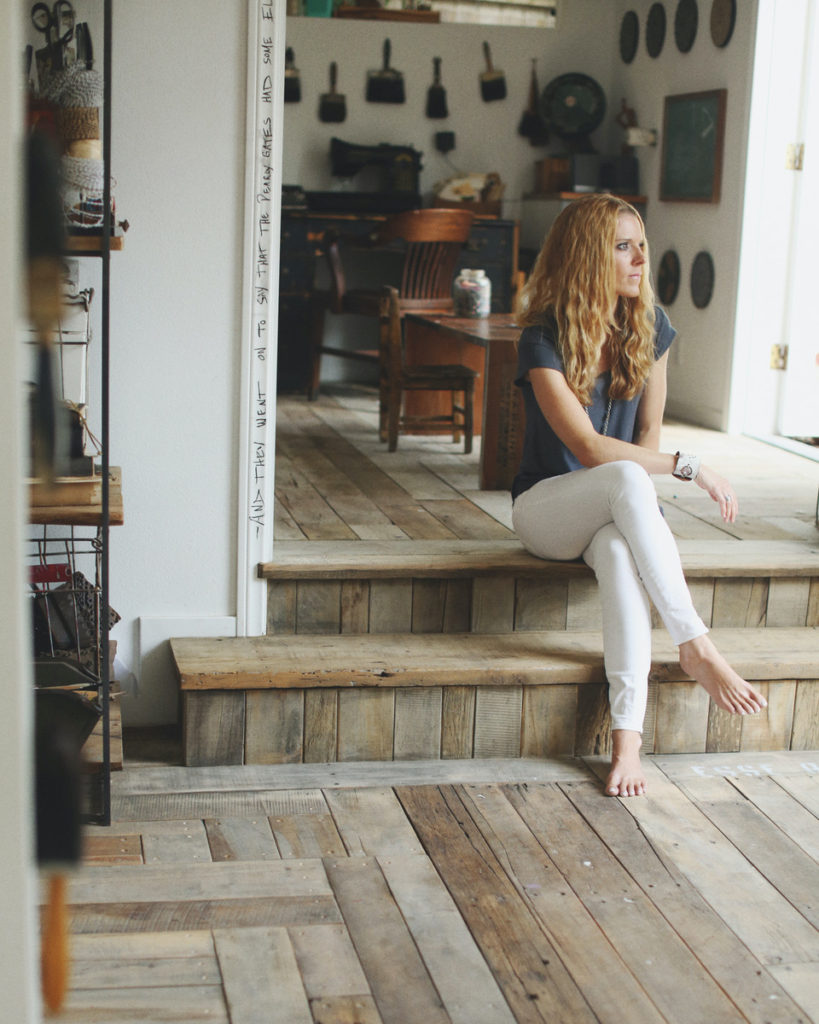
MKM: Tell me about your childhood, where did you grow up? Were you always creative?
KI: I grew up in Western New York outside of Buffalo. I was constantly drawing as a child. I submitted cartoons magazines as a child thinking I could be a freelance illustrator in elementary school and middle school – I received very nice rejection letters. Beyond that, I never really thought about art as a career, I just knew I would always love and create art.
MKM: Why did you pursue art?
KI: In college I fell in love with painting to a level I had not expected. I was a bit over-extended those years and had committed to the equivalent of 3 majors, held 2 jobs (one as a TA for 2 professors, and one as a rock climbing guide for the University’s Outdoor program), all while playing college Lacrosse. Long story short, by my senior year I was so over-extended that I had to cut something out in order to make sure I didn’t lose time in the studio – the place I wanted to be the most. I thought long and hard. Growing up, I’d always loved the saying, “Jack of all trades, master of none.” I believe it was because I actually only heard the first part… “Jack of all trades…” which was something that appealed to me. I loved learning about and trying many different things. My senior year in college, after I had so thoroughly explored the idea of “Jack of All Trades”, something hit me like a load of bricks – it literally felt like it knocked me over…… “Master of None.” I finally heard that part. “Master of None.” I really heard it. It haunted me. You can do everything and become pretty good at a lot of exciting things, but you’ll never really explore one thing to the full capacity, that one thing you truly love, if you’re too busy pursuing other interests. Everything changed for me in that moment. I knew that I wanted to pursue and explore painting more than anything else. I didn’t think it could soon become my full-time job, all I knew was that I wanted to paint and be in the studio as much as I possibly could. I loved it that much. So, I started sacrificing other things for the first time in my life; and it was worth it.
MKM: Where did you study?
KI: St. Lawrence University in Upstate New York. A wonderful school that offered me great experiences and opportunities.
MKM: Did you have any memorable teachers at St. Lawrence University?
KI: Any teacher that encourages your natural abilities is a memorable teacher. In college I had several wonderful professors. Two that stood out most were Tom Greene and Melissa Schulenberg. Tom is an Environmental Psychologist that I worked for and Melissa was my printmaking instructor and an artist herself. They were both so encouraging to me in finding my way, pushing me to pursue my unique interests and helping make a path out of those interests during my college career.
MKM: When you’re creating what’s your daily routine? rituals, patterns?
KI: My routines and work patterns have changed a lot over the years. Before kids I could easily work thirteen-hour days and paint until my eyes went blurry. I didn’t have a lot of structure, it was just – go to work. I loved it. Over time more and more structure has slipped into my work routine. A year ago we had our 3rd child. Shortly after she was born I accepted representation into my 7th gallery and wasn’t really sure how I was going to pull it all off. I started setting a specific goal for each week of what I needed to get done in the studio. I try to set realistic goals – but also goals that push me a bit. If I’m working on an exhibition this is how I ensure I have enough time to complete what I need to.

MKM: Do you focus on a specific medium or combination of mediums? Which creative medium would you love to pursue but haven’t yet?
KI: I use everything and anything. I consider myself a contemporary collage artist because collage, specifically vintage ephemera collage, has become such a huge component in what I do over that last 10 years. My work often includes vintage ephemera dating back to the early 1900s, even 1800s, fabric, leather, oil, acrylic, graphite, and sometimes resin. I use collage and assemblage that triggers memories in viewers: Vintage erector set parts, McCall’s dress patterns, Hollywood movie magazines from the 50s, New York Times fashion ads from the 20s, matchbox covers, hand-painted vintage signage; the list goes on and on. The work is meant to be a painting from afar, and a treasure hunt of materials upon further investigation.

MKM: What themes do you pursue?
KI: Memories, nostalgia; the crossover between past, present, and future. My figures have themes of independence, freedom, adventure, strength of women, as well as the unique and innocent imagination and adventurous spirit from childhood.
MKM: What is your most important tool? Is there something you can’t live without in your studio?
KI: My fabric shears. Collage artists “geek out” over really sharp scissors. I could paint with my fingers if I had to, but I can’t cut with them, or draw with them for that matter. After scissors, I would say a 4H graphite pencil.
MKM: Is there an artwork you are most proud of?
KI: Cornerstone pieces. The pieces that changed my direction because they opened up a new door in my creative world. Magnetique I & II were the first figurative pieces that I did that were entirely collage. A New Daysymbolizes a lot for me and my career. And also, a newer set of panels, Jewels of Narration represents a newer direction in the evolution of my Storyline Panels, a series which I’ve been doing for over ten years.
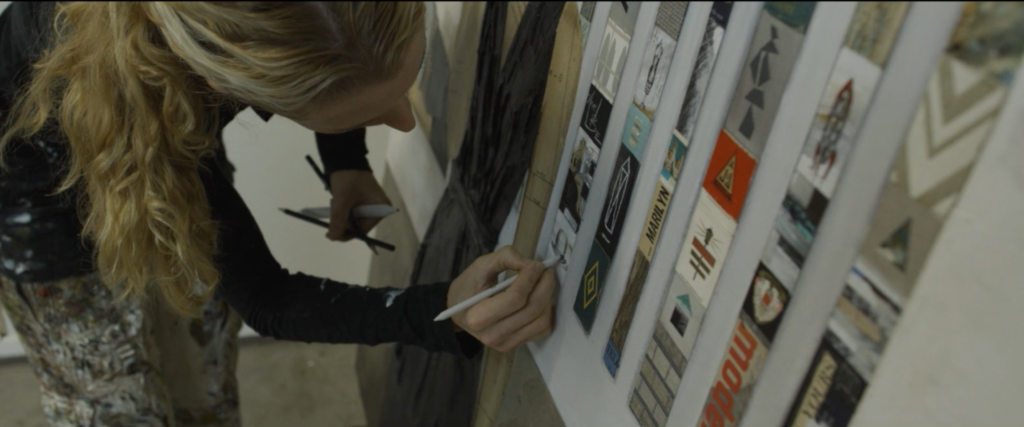
MKM: What has been a seminal experience?
KI: When I mentioned that in my senior year of college I was overextended, and my studio time was at risk — I ended up making the very difficult decision to leave the college Lacrosse team in my senior year in order to spend more time in the studio. You get very close to team members of a college sports team and I left something very social and exciting to do something rather solitary, but the decision itself was pivotal for me. Without knowing it, I had started down a path of making sacrifices for studio time; Choosing art over many other things. It helped lay the foundation in a career well before I actually knew I would have a career as an artist.
MKM: What art do you identify with the most?
KI: It’s a wide range. I’m tempted to say collage or mixed media, but that really doesn’t cover it. I think that I identify most with art that is layered in meaning. Art that makes my heart race could be anything. Art that you can’t help but walk up to, get really close to it, and immerse yourself in how the artist created it. I’d like my paintings to be one thing from afar, and another up close.
MKM: What inspires you? Other artists, women from history, your process, a theme?
KI: The idea of creating something from life, in a way that is different from what anyone has seen before, that draws people in and then brings people back, or propels them forward is inspiring. Wayne Thiebaud’s landscapes, Andrew Wyeth’s fine detail, Andy Goldsworthy’s leaf and stone formations, Helen Frankenthaler’s uninhibited boldness… There are so many artists from the past and present that are awe inspiring. Making something new and different is more challenging for artists every year, every decade — but that’s what makes it in and of itself an inspiring task, it’s the challenge — and the reality that it’s possible.
MKM: Do you have a sense of connection to a particular woman artist from art history? Is there a specific work from this artist that you find interesting?
KI: I would have to say Helen Frankenthaler’s Mountains and Sea because of what it represents, both for her, for female artists. She was inspired, set a new path, stood out among men, and the work is breathtaking.
MKM: Who are your female role models from history or present day?
KI: A role model to me is someone who is unwavering in their particular passion; highly capable by choice — a doer because they can’t imagine letting life go by without trying. Someone who is genuinely kind and thoughtful and selfless, but also driven with self-discipline. Someone who isn’t afraid to pursue their dream career and motherhood at the same time. These aren’t always famous individuals, these are people I meet along the way through life that I just want to keep talking to. These are people like my grandmother and my mother.
MKM: What’s the best piece of advice you’ve been given?
KI: Trust your first instinct. A painting instructor told me that while pointing out my initial painterly gesture in a large abstract piece. He said, “Build the entire piece around that.” He was right. In painting and in life. My first instinct is usually the best choice, and when I choose to ignore it, I usually regret it.
MKM: What is your dream project? What can we expect from you in the next year?
KI: My dream project in the future is to complete a very large-scale collage/assemblage figurative work that includes dozens of individuals interacting through time; 30 feet or more. Either a mural or a work that can be exhibited and moved — several large works that come together. My plan for next year is to keep evolving my work by way of materials and technique and eventually take the panels into sculptural form.
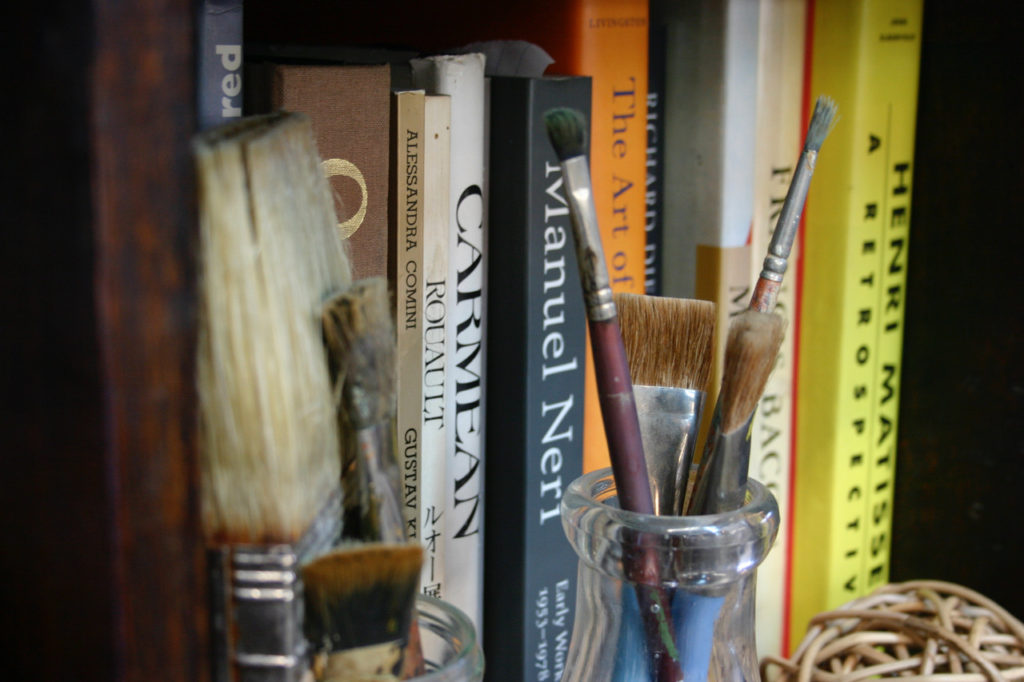
Kelsey Irvin is represented by: Craighead Green Gallery, Dallas, TX; Exhibit by Aberson, Tulsa, OK; GF Contemporary, Santa Fe, NM; Gardner Colby Gallery, Naples, FL; Jules Place Gallery, Boston, MA; Kelsey Michaels Fine Art, Laguna Beach, CA; Studio E Gallery, Palm Beach, FL; and Whitney Modern, Los Gatos, CA
